

The mass tourism industry EXPLAINED
Disclaimer: Some posts on Tourism Teacher may contain affiliate links. If you appreciate this content, you can show your support by making a purchase through these links or by buying me a coffee . Thank you for your support!
Mass tourism is a prominent part of the tourism industry. Associated with the traditional package holiday, well-known holiday resorts and famous tourist attractions, many areas both benefit and suffer at the hands of mass tourism. But what exactly is mass tourism and how does it impact the wider tourism industry?
In this article I will explain what mass tourism is, with some useful definitions. I will then outline the characteristics of mass tourism, the evolution of mass tourism and the positive and negative impacts of mass tourism. Lastly, I will provide some examples off destinations that are known for their mass tourism industries.
What is mass tourism?
Mass tourism definitions, extreme concentration of tourists, saturation of a destination, organised groups, accessibility, media and promotion, the stage of consolidation, psychocentric tourists, how did mass tourism evolve, enclave tourism, beach holidays, theme parks, major tourist attractions, mountain climbing, positive impacts of mass tourism, negative impacts of mass tourism, how can we manage mass tourism in a sustainable way, mass tourism destinations, mass tourism: conclusion, further reading.
Well, the clue is in the title!
Mass tourism is essentially tourism that involves ‘the masses’.
So, what is a mass? Well, this is not exactly clear. But lets just say its usually a lot- like thousands or tens of thousands or more.
Mass tourism can occur in a variety of tourism situations. It could be a coastal resort, such as Benidorm. It could be an area that is home to a major tourist attractions, such as the Great Wall of China . It could be a picturesque village or remote island.
Wherever mass tourism occurs, it relies on the same concept- there are large amounts of tourists , often filling or exceeding capacity, in a given location at one time.
For decades, mass tourism has been a widely used term in tourism literature as well as in wider society. Yet, to this day there has never been a clearly agreed definition and content.
According to Poon (1993), mass tourism refers to the movement of a large number of organised tourists to popular holiday destinations for recreational purposes. It is a phenomenon which is characterised by the use of standardised package products and mass consumption. Conceptually, this type of tourism features standardized leisure products and experiences packaged for mass tourists.
Hilallali (2003) describes mass tourism as ‘an offspring of industrialisation and democracy, good student of consumption and globalisation .
As noted by Dehoorne et Theng in 2015, Mass tourism is the epitome of aggressively large-scale sold standardized packages stands in stark opposition to elite or luxury tourism.
Naumov and Green (2016) state that mass tourism refers to the movement of a large number of organised tourists to popular holiday destinations for recreational purposes.
Whilst these definitions are useful, I personally feel that they are all missing some important detail. These definitions quite rightly acknowledge the fact that organised packaged tourism products are significant facilitators of mass tourism. But they fail to acknowledge the growing dynamic independent tourist.
In today’s world, consumers are more independent than ever. We can find a cheaper deal online ourselves than what the travel agent is offering. We can plan our own itinerary using the information presented by travel blogs. We don’t need a guide when we can download the information we need on our phones. But just because we are not part of a mass organised group, does not mean that we are not mass tourists.
Thousands of tourists flock to Santorini’s picturesque white streets each July. Thousands of people line the streets of Shanghai to get a look at the light show on the Bund each evening. People struggle to get a photo without the crowds of tourists behind them at the Pyramids of Giza in Egypt. Are all of these people on an organised package holiday? I very much doubt it.
In reality, most attempts to define the concept of mass tourism are indeed outdated, failing to take into account post-modern tourist motivations and behaviours. In light of this, I have developed my own definition of mass tourism below…
Mass tourism can be defined as ‘extreme concentrations of tourists in any one place, resulting in saturation of the place’. Mass tourism cannot be characterised by specific numbers or values, because every destination has different carrying capacities. Rather, mass tourism occurs when there are too many tourists for a destination to comfortably accommodate.

Characteristics of mass tourism
OK, so now we have defined mass tourism, what are the identifying characteristics? The most notable characteristics of mass tourism include: extreme concentrations of tourists; the saturation of a destination, travel in organised groups, good accessibility to a destination, media influence, the stage of consolidation and tourists who are described as psychocentric.
I will explain what each of these means below.
The most obviously characteristic of mass tourism is that there are a lot of tourists. What is a lot, I hear you say? Well, I can’t quite answer that question-sorry.
Each type of tourist destination is different. Some places are big, others are small. In fact, what is a destination? Well, this isn’t entirely clear either.
In the context of mass tourism, a destination could be a city, a holiday resort or the area surrounding a popular tourist attraction. The size of the destination doesn’t actually matter though. The important fact is that there are more tourists that come to the area at a given time than the destination can comfortably cope with.
OK, so here comes another subjective term- what does ‘comfortably cope’ mean? Well, what I mean by this, is that if the tourism has adverse effects as a result of the visitor numbers, it is no longer ‘comfortably coping’. This could include environmental degradation, gentrification or adverse social impacts, for example.
So the major characteristic associated with mass tourism is that there are too many tourists in a given area, big or small.
Having too many tourists leads to saturation of a tourist destination.
If a tourist destination is saturated, there are likely to be more tourists than members of the local community. Revenue from tourism-related activities is likely to dominate the economy. Many of the negative economic , environmental and social impacts of tourism are notable.
Mass tourism is generally associated with the concept of overtourism . Overtourism refers to the issue of having too many visitors in a given time in a given place, which impacts negatively on the tourist experience, the host community and environment.
Overtourism is a growing problem that can only be resolved by adopting principles of sustainable tourism management.
Mass tourism is associated with organised and packaged tourism.
Whilst not all mass tourists are package tourists, there is definitely a linear relationship between the two.
By default, group organised holidays bring large amounts of tourists to a destination at the same time. Whether this by via a coach tour, a day trip or through a tour operator, travel in organised groups brings large amounts of tourists together in one place at one time.
Group tourism is usually organised in a place because it has some particular value to the tourist. For example, there are many tours to visit the famous Abu Simbel attraction in Aswan, Egypt. Likewise, Sharm el Sheikh is a popular destination for package holidays and enclave tourism .
Mass tourism is directly associated with good accessibility.
The advent of the low cost airline largely fuelled the growth of the mass tourism industry. Airlines such as easyJet and Wizz Air put new tourist destinations on the map and helped to transport more tourists to existing tourist destinations than areas could [can] comfortable cope with.
Cheap flights has meant that many areas have become saturated with tourism. Cheap flights means that more people can afford to go on holiday, more often.
But accessibility isn’t just about price. The past two decades have seen the number of available flights increase exponentially. This has meant that destinations are more accessible to tourists.
Likewise, many destinations have become more accessible because they have developed their transport infrastructure. New airports, new roadways and improved rail infrastructure has meant that more tourists can reach more destinations around the world than ever before.
If we don’t know about a place then we don’t go to a place.
The media has placed a significant role in the growth of tourism to particular areas. From episodes of Karl Pilkington’s Idiot Abroad to Travel Man, starring Richard Ayoade , to Leonardo Dicaprio’s famous film, The Beach , there are plenty of places that have made their way to fame through the media.
One of the most notable developments in the promotion of tourist destinations is the development of social media. Have you ever heard of Insta tourism ? Yep- it’s a an actual type of tourism !
Social media platforms have raised awareness of many tourist destinations around the world that had previously featured only deep in our guidebooks.
In particular, Instagram’s geotagging function enables social media influencers to display the exact location of where their photographs were taken. This has resulted in tourists flocking to areas around the world that had previously experienced little or no tourism.

Butler, in his Tourism Area Life Cycle model , outlines the way in which a destination grows and evolves. In his model, there is a clear point at which tourist numbers are at their highest. This is the time when tourism is fully developed and is starting to the negative experience impacts associated with overtourism .
When tourism reaches the stage of consolidation in a destination, it is likely that it is also experiencing the concept of mass tourism.

Similarly to Butler, Plog looked at tourist motivations, mapping them to particular times during a destination’s development in his model of allocentricity and psychocentricity .
Plog demonstrated in his typological assessment, that when a tourist is classified as a psychometric tourist, they are likely to pertain to mass tourism as their primary choice of holiday type.
Psychocentric tourists typically travel in organised groups. Their holidays are typically organised for them by their travel agent . These travellers seek the familiar. They are happy in the knowledge that their holiday resort will provide them with their home comforts. These tourists enjoy holiday resorts and all inclusive packages . They are components of enclave tourism , meaning that they are likely to stay put in their hotel for the majority of the duration of their holiday. These are often repeat tourists, who choose to visit the same destination year-on-year.
The history of tourism is a long one and mass tourism plays a key role in the growth and development of the tourism industry .
The origins of mass tourism can be traced back to 1851, when Thomas Cook led his first organised group of tourists to the Great Exhibition in London. While his business model did change and adapt over the years, the concept remained the same- organised group travel.
Over time, more and more people were able to travel. After World War ii, people began to have more disposable income and new legislation was brought in to ensure that workers had paid holidays each year.
At the same time, destinations became more developed. They developed their transport infrastructure, promoted their destination for tourism and built the facilities and amenities that tourists required.
Mass tourism notably developed in Western societies since the 1950s. This was the result of a period of strong economic growth. Mass tourism was first seen in Western Europe, North America and Japan as these countries had strong economies and thus the general public were wealthier overall.
Globalisation has also fuelled the mass tourism industry. People can find the familiar on their travels. There are less surprises than there once was. We can research our trip on the Internet and watch travel shows to familiarise ourselves before we travel.
The mass tourism industry really started to boom with the advent of the low cost carrier . The average UK outbound tourist went from having one two week holiday per year to taking a big holiday and a couple of short breaks. People who couldn’t afford to go on holiday before, were now being brought into the market.
Types of mass tourism
Although many people associate mass tourism predominantly with the traditional package holiday model, there are in fact many different types of mass tourism.

Examples of enclave tourism destinations : Sharm el Sheikh, Egypt ; Kusadasi, Turkey; Costa Blanca, Spain.
Mass tourism is commonly associated with enclave tourism .
Enclave tourism is essentially tourism that takes place in a space that is segregated from the community outside. It is in its own ‘bubble’, so to speak.
Enclave tourism implies a conscious decision to segregate tourists from the general population . This is usually in the context of an all-inclusive environment such as a cruise ship, hotel or resort complex.
Enclaves are enclosed and self-contained physically, socially, and economically. This means that tourists have hardly any reasons to leave the enclave.

Examples of mass tourism beach destinations: Benidorm, Spain; Phuket, Thailand; Kuta, Bali .
There are many beach areas where the destinations have become overdeveloped. These are most commonly located in Western Europe, although they are found all around the world. It is these overdeveloped beach areas that are most commonly associated with mass tourism.
Mass tourism beach holidays have traditionally been the bread and butter for travel agents . Up until this day, high street travel agents are filled with holidays brochures boasting photo after photo of beautiful beaches and swimming pools.
With the lack of British sunshine and seemingly endless rainy days, it is no surprise that Brits, amongst other nationalities, seek warmer climes. Thomas Cook’s products were among the first to provide British holiday makers with the typical sun, sea and sand experience, but there have since been many more players enter the market.

Examples of mass ski destinations: Andorra, Italy ; Chamonix, France; Breckonridge, USA.
There are many ski resorts that have developed to such a stage that they can now be classified as mass tourism destinations.
Popular throughout the winter months, many tourists flock to ski destinations for their holiday. This is especially popular in the Alps in Europe and the Rockies in the USA and Canada.
Ski holidays are also often sold as a packaged product by travel agents, composing of flights, transfers, accommodation and ski rental/lessons.

Examples of mass tourism in theme parks: Universal Studios Florida , USA; Alton Towers, UK; Disney Shanghai, China.
Theme parks attract large amounts of tourists.
Disney Land, Paris attracts around 15 million tourists each year, Disney Land in Tokyo has approximately 18 million visitors and Magic Kingdom at Walt Disney Florida has more than 20 million tourists each year! Wow, that’s a lot!
People who visit theme parks also often provide a tourism boost for local areas too. People may choose to eat at nearby restaurants or stay in nearby hotels.

Mass tourism events: Hogmonay, Edinburgh, UK; Rio Carnival, Brazil; San Fermin , Spain.
Mass tourism occurs when large numbers of people undertake tourism-related activities in the same place at the same time. This is often the case with major events.
From the Olympics to the Day of the Dead Festival in Mexico, events attract tourists all over the world.
Mass tourism caused from events can out a strain on locals areas, which may not be equipped to deal with the influx of visitors.

Examples of major tourist attractions attracting the masses: The Eiffel Tower, France ; The Pyramids of Giza, Egypt; The Great Wall, China.
Many tourists will travel to an area to visit a particular tourist attraction. Whether this is a museum in Paris, a war memorial in Washington or an underground cave in Jeju , South Korea, tourist attractions are often the main appeal of a tourist destination .
Major tourist attractions can attract masses of tourists, who then spend time in the surrounding area, thus making the area a mass tourism destination.

Examples of mass tourism cruise areas: The Caribbean; the Mediterranean.
Cruise tourism is one of the most popular types of tourism .
Cruises come in all shapes and sizes and the smaller ones are obviously not examples of mass tourism. However, some cruise ships are so big that they are the size of a small city!
The largest cruise ships in the world have a capacity of more than 5000 tourists. These tourists will disembark en mass when the ship docks at various locations, causing an influx of tourists to said destinations over a short period of time.

Examples of mountain climbing where tourist numbers exceed capacity: Mount Everest; Mount Kilimanjaro.
Mass tourism when climbing a mountain? Surely not? Well actually- yes.
OK so you are not getting thousands of tourists like you might on a cruise ship or in a beach resort, but like I explained earlier, mass tourism is not about specific numbers- it is when the numbers exceed capacity.
Sadly, there have been many stories in recent years of capacity issues when climbing mountains. The most notable is on Mount Everest, where tourists have dies as a result of queuing at high altitude.
Whilst mass tourism is most commonly discussed because of its negative impacts, there are actually some positive impacts of mass tourism too.
Mass tourism makes money. That’s the number one motivator for all destinations who allow areas to evolve into mass tourism destinations (not sure what I mean? Take a look at Butler’s Tourism Area Life Cycle model ). After all, money is what makes the world go round, right?
Mass tourism brings lots of tourists. Lots of tourists spend lots of money. This supports economic growth in the local area and enables the destination to spend or reinvest the money that is made in a way that is appropriate for that particular area. Some destinations may build more hotels. Other may make financial investments. Some may spend more money on public health services or education.
However they choose to spend their money, it is money which is the motivation for tourism development.
Mass tourism creates many jobs. This also helps to boost the local economy as well as supporting livelihoods. Jobs can be directly related to tourism (i.e. a hotel waiter or a holiday representative) or they can be indirectly related to tourism (i.e. the fisherman who supplies fish to the hotels).
You can read more about the positive economic impacts of tourism here .
Mass tourism has gained a pretty bad reputation in recent years. If you Google the term ‘mass tourism’ you will be largely greeted with articles that discuss the negative impacts on the environment and society.
Mass tourism creates intense environmental pressures due to the fact that such activity involves a large number of tourists in small areas. The environmental impacts of tourism include aspects such as littering, erosion, displacement of animals, damage to flora and fauna and reduction in air quality, to name but a few.
Mass tourism can also cause significant social impacts . Gentrification, increases in crime, loss of culture and authenticity and cultural ignorance are just some of the ways that large amount of tourists in a given area can negatively effect the local society.
The other major problem is economic leakage . Whilst mass tourism creates significant revenue, not all of this money remains in the destination. In fact, because mass tourism is closely associated with all inclusive holidays and enclave tourism, it experiences more economic leakage than other areas of the tourism industry.
Economic leakage is when the money raised leaks out of the area. This is largely due to multinational chains operating within the tourism system .
If you eat McDonalds, most of your money goes back to America.
If you buy a can of Coke, most of your money goes back to America.
If you stay in a Hilton Hotel, most of your money goes back to America.
Get the picture?
The key to managing mass tourism in a sustainable way is to minimise visitor numbers. OK, so that sounds counterintuitive, right? Wrong.
Yes, mass tourism is great because it brings in lots of money. BUT the problem is that it is not sustainable. Destinations cannot continue to exceed their capacity indefinitely.
As I explained above, there are generally more negative impacts associated with mass tourism than there are positive. But that doesn’t mean that mass tourism doesn’t have to stop altogether. There are many methods to manage tourism destinations in a more sustainable manner.
One way to manage mass tourism better is to provide incentives to help distribute tourists evenly throughout the year and to avoid the peaks and troughs that come with seasonality. Instead of having the majority of tourists arrive in July and August, for example, a destination could put caps on visitor numbers during this time and instead offer discounted rates at other times of the year.
A destination could temporarily close to allow for some of the environmental damage caused by mass tourism to be repaired. This has been done at Maya Bay in Thailand and on the island of Borocay in the Philippines in recent years, with positive outcomes.
Another way to manage mass tourism in a more sustainable way is to introduce smart tourism techniques. These can help to better manage tourist flows, monitor tourist activity and accurately analyse tourist patterns and behaviours. This allows tourism stakeholders to more easily and more accurately implement sustainable tourism principles where possible.
Ultimately, however, sustainable tourism and mass tourism are contradictory terms. Mass tourism is generally viewed as the antithesis of sustainability, due to the large amount of negative impacts that are widely known and documented. That isn’t to say that sustainable mass tourism is impossible, it just requires some very careful tourism planning and management.
There are many destinations around the world that are classed at mass tourism destinations. Some are resorts, others are major tourist attractions. Some destinations have suffered at the hands of the mass tourism industry for many years and others are new to the scene. In some cases, Governments have [are] implementing changes to better manage tourism or to remove themselves from the mass tourism market.
As much as I would love to discuss each of the mass tourism destinations below, this article is already almost 4000 words long, and I don’t want to bore you! Instead, I will provide a list of mass tourism destinations and if you are interested, you can research these more yourself!
Mass tourism destinations include:
- Eifell Tower
- Val-d’Isere
- Côte d’Azur
- Mont St Michael
- San Sebastian
- Vatican City
- Coloseum, Rome
- Cinque Terre
- Neuschwanstein, Germany
- Hallstatt, Austria
- Oktoberfest, Munich
- Stonehenge, UK
- Lake Lucerne, Switzerland
- Great Wall of China
- The Bund, Shanghai
- Terracotta Warriors, Xian
- Islands of Thailand
- Mount Everest
- Great Barrier Reef
- Macchu Picchu
- Manuel Antonio, Costa Rica
- The Caribbean islands
- Several US National Parks
- Pyramids of Giza, Cairo
Mass tourism is big business, quite literally. Mass tourism isn’t new, but our awareness of many of the negative impacts that it causes is relatively new. It is only in recent years that we have really started to understand the impacts of our actions and think in a more sustainable way.
As you can see, there are many mass tourism destinations all over the world. Are these destinations and the practices that they are adopting sustainable? Probably not.
It is imperative that we plan and manage our tourism industries in order to keep them alive. To learn more about how we can do this and about the importance of the mass tourism industry, I suggest that you consult the texts below.
- Overtourism – This book examines the evolution of the phenomenon and explores the genesis of overtourism and the system dynamics underlining it.
- Overtourism: Tourism Management and Solutions – Questioning the causes of this phenomenon, such as increased prosperity and mobility, technological development, issues of security and stigma for certain parts of the world and so on, this book supposes that better visitor management strategies and distribution of tourists can offset the negative impacts of ‘overtourism’.
- The Challenge of Overtourism – Working paper outlining the concept by Harold Goodwin.
- How to be a highly Sustainable Tourist: A Guidebook for the Conscientious Traveller – a great guide with tips on how to travel sustainably
- The Intrepid Traveler: The ultimate guide to responsible, ecological, and personal-growth travel and tourism – Leading travel expert Adam Rogers draws upon 40 years of experience exploring more than 130 countries in every region on Earth to share the smartest ways to travel in this tip-filled guide
- Outdoor Recreation: Environmental Impacts and Management – an academic text discussing the sustainability of outdoor pursuits
- Sustainable and Responsible Tourism: Trends, Practices and Cases – Sustainable tourism case studies from around the world
- Responsible Tourism: Using tourism for sustainable development – a textbook addressing the concept of sustainability in terms in development
Liked this article? Click to share!

The "Good Tourism" Blog
For diverse perspectives on sustainable tourism & responsible travel ... because travel & tourism is everyone's business., what is ‘mass tourism’ and what’s the problem.
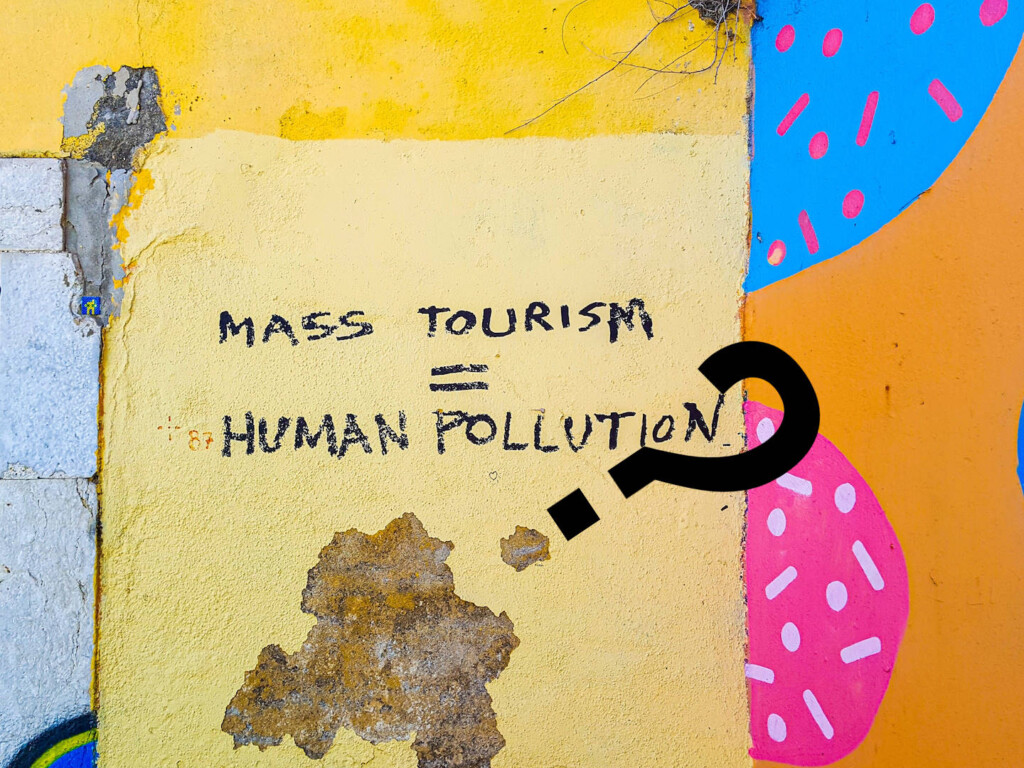
What is ‘mass tourism’? How do we think about it and talk about it? Do we consider all of its contexts, costs, and benefits?
Does mass tourism contribute to good lives? Or do ‘the masses’ only represent threat?
Does leisure travel for the many have its place in a ‘green’ future for us all? Or will it remain the privilege of a few?
Vilhelmiina Vainikka shared this “Good Tourism” Insight at the invitation of Tourism’s Horizon: Travel for the Millions , a “GT” Partner. (You too can write a “GT” Insight .)
Table of contents
What is ‘mass tourism’ .
Why would anyone ask such a question? Isn’t the answer obvious?
Presumably everyone using the term — in industry, academia, and in general — has some idea of what mass tourism might be. After all, it’s likely we have been tourists ourselves, many of us live in places that attract tourists, and many work in tourism.
Mass tourism is integral to our culture. But, as Raymond Williams argued in relation to the term ’culture’ itself, its ubiquity masks a range of contested understandings.
Don’t miss other “GT” posts tagged ‘Carrying capacity, mass tourism, & overtourism’
Researchers of tourism have probably had to define mass tourism in their publications. Tourism students have probably had to learn one or more definitions. We can say that most people — academics too, despite claimed expertise and authority — hold socially-constructed views of mass tourism.
There are many different definitions of and perspectives on mass tourism. My own doctoral research concentrated on the different ways professionals — academic researchers, package tour agents, and tour guides — think of mass tourism.
What is ‘mass tourism’? Quantitative vs qualitative definitions
When we define something, we are simultaneously part of creating that phenomenon. Language conveys meaning, but also constructs it. Definitions make something an understandable entity, drawing lines where it ends and something else begins.
One way to define mass tourism is as a quantitative notion. ‘Mass’ implies a large scale, involving many people (in relation to the global, regional, or local context in which mass tourism is perceived).
This quantitative notion is often tied to qualitative characteristics. Large numbers of tourists may be understood in a positive, neutral, or negative way. Today it is often understood as problematic, for example in the debates on ’overtourism’.
Mass tourism can also be approached in other, more qualitative ways:
- It can refer to a mode of production/consumption . So, for example, we might think of Fordist mass production, or economies of scale of mass production.
- It can refer to spatial specialisation . The resort as a space for mass tourism is an example of this.
- It can also carry a strong association with democratisation , such as access to tourism by sections of society; by social class , for example.
All of the categories mentioned above have changed — none are static — adding to the reality that mass tourism really needs thinking through.
Equally, mass tourism can also be understood as a ’super-umbrella term’ for tourism for ’the masses’, which combines the aforementioned perspectives. This suggests that numbers of tourists, the mode of production, the politics of consumption, physical manifestations such as the resort, and democratisation, are all part of a wider ideological and political infrastructure that we might call ’mass society’ or ’mass culture’.
The super-umbrella approach connects tourism to all of its historical, economic, and political contexts: the development of industrial society, political change, growth, (in)equality, technological advances, and infrastructures.
Notably in this framing, the niche modes of tourism (ecotourism, for example), which are often aesthetically and culturally counterposed to mass tourism, can be seen as being part of the mass phenomenon of tourism, just like the resort. This underlines the complexity of the phenomenon today.
Also read Sudipta K Sarkar’s “Good Tourism” Insight ‘Ecotourism for the masses, not the elite classes!’
Contexts for mass tourism: The ‘good life’
Context is important. Mass tourism is contextualised on spatial, temporal, and scalar terms; we experience it in space, time, and at a scale. Therefore, it is necessary to zoom in on different local, regional, and national contexts in which mass tourism is taking place. The histories of different communities with mass tourism, whether as destinations or as sources of tourists, are meaningful in understanding contemporary lifestyles and ideas of what constitutes a ’good life’.
Is mass tourism a singularity or a plurality?
The ‘mass’ in mass tourism is both a singular and a plural . The relationship between the two is key. In discussions of mass tourism, characterisations of the singular mass, or ’the masses’, can obscure the plurality of individuals, and individuality itself.
I have argued in my research that the usefulness of mass tourism as a concept is embedded in addressing this very relation; reflecting on what the ‘mass’ symbolises and what consequences it has for how we see our fellow humans.
Erik Cohen has urged more research on mass tourist experiences and underlined the possibility for both collective and individual experiences. We should allow space for both the singularity and the plurality in the discussions we have of mass tourism.
Are the masses a threat?
Seeing large numbers of people as a threat is not new, nor is it only a feature of debates about tourism. Christian Borch noted that crowds have often been perceived more as a threat than a solution in society .
Classical crowd theories hold that individual agency and individuality are lost in the mass mind, and that crowds threaten the social order. These theories emerged in part as an elite fear of unrest among the urban working masses. One could argue that these fears are sustained through contemporary prejudices.
Also read Jim Butcher’s “GT” Insight ‘Was this the European summer of terrible tourists? Give us a break, media!’
These ideas, and their modern manifestation, are often reductive. Rather than threatening, the crowd can be the very thing that is attractive about tourism experiences. For example, Jillian Rickly reminds us that part of the appeal in tourism are the events in which crowds gather and create an authentic experience.
Certainly, tourism is a form of competitive consumption. Often we wish there were no other tourists, and certainly no crowds, at the places we wish to admire and enjoy. But equally, in other contexts, crowds can be exciting, fun, human; the very essence of what anthropologists refer to as communitas .
Let’s talk about mass tourism … deterministically or flexibly?
Whether we are researchers, authorities, or tourism industry professionals, it matters how we discuss mass tourism . If we use a deterministic discourse, we liken mass tourism to a mould. Into that mould we pour the experiences of millions, but turn out a single, uniform entity: stereotypical mass tourism.
However, if we use a flexible discourse on mass tourism, we recognise that the phenomenon, including its production and consumption, changes over time and as technologies and knowledge are developed. This acknowledgement requires us to take a more dynamic conceptualisation and wider perspective on mass tourism. As a result, we get a more realistic portrayal of the phenomenon, which can lead to more fruitful discussions on its status and future.
Mass tourism vs the green transition
When we follow the discussion on the green transition for a sustainable future, we are challenged by the issue of ’quality over quantity’; a better type of tourism . It sounds reasonable because, of course, we wish tourism standards to be high in relation to the environment and local communities.
But as destinations seek to optimise benefits from tourism, ’quality over quantity’ can mean in practice ’the upper classes versus the masses’; ’quality’ tourism for the rich and better educated; ’quantity’ for the less enlightened ’mass tourist’ stereotype.
Also read Peter Smith’s “GT” Insight ‘For the sake of the world’s poor, might the risk of overtourism be worth it?’
Perhaps we should invest more in finding ways to accommodate as many as possible, while considering that tourism could be something different from what we have practiced so far. This may also make it easier to win support from ‘the masses’ — individuals seeking their own versions of the ‘good life’ — for reducing carbon emissions and addressing environmental concerns.
Ultimately, the masses vote, produce, and consume. Progressive, sustainable change needs to come through them. Caricatures of mass tourism are unlikely to win friends and influence people.
Mass mobilities
Finally, researchers have begun to investigate how climate change influences the mobilities of people, naming it ‘ climate mobilities ’. It is likely that we will face a blurring of the previous categories of mobility.
Climate change, and the impacts it has on different places, will likely increase migration and affect tourism. Categories of travel — voluntary/involuntary, leisure/residential, migration/refugee, short-term/long-term, etc — will be further complicated.
Therefore, we need to discuss how societies and mobilities will be constructed and for whom. Through it all we should remember that ‘the masses’ are the ’we’ and the ’us’; the ‘you’ and ‘I’; the prospective beneficiaries of true sustainable development.
What do you think?
What is ‘mass tourism’ to you? Share your own thoughts in a comment below. Or write a deeper “GT” Insight . The “Good Tourism” Blog welcomes diversity of opinion and perspective about travel & tourism, because travel & tourism is everyone’s business .
“GT” is where free thought travels.
About the author

Vilhelmiina Vainikka is a post-doctoral research fellow at Tampere University , Finland. She is working on the HUMANE-CLIMATE project (2022 – 2026), “the civic potential of climate mobility”, which is funded by the Academy of Finland.
Dr Vainikka contributed this “Good Tourism” Insight at the invitation of Tourism’s Horizon: Travel for the Millions , a “GT” Partner.
Featured image (top of post)
What is ‘mass tourism’? Is it, as this graffiti asserts, “human pollution”? Image by Mark de Jong (CC0) via Unsplash . “GT” cropped the image and added the dangling ‘?’.
Contents ^
Related posts

This site uses Akismet to reduce spam. Learn how your comment data is processed .
Privacy Overview
Open Access is an initiative that aims to make scientific research freely available to all. To date our community has made over 100 million downloads. It’s based on principles of collaboration, unobstructed discovery, and, most importantly, scientific progression. As PhD students, we found it difficult to access the research we needed, so we decided to create a new Open Access publisher that levels the playing field for scientists across the world. How? By making research easy to access, and puts the academic needs of the researchers before the business interests of publishers.
We are a community of more than 103,000 authors and editors from 3,291 institutions spanning 160 countries, including Nobel Prize winners and some of the world’s most-cited researchers. Publishing on IntechOpen allows authors to earn citations and find new collaborators, meaning more people see your work not only from your own field of study, but from other related fields too.
Brief introduction to this section that descibes Open Access especially from an IntechOpen perspective
Want to get in touch? Contact our London head office or media team here
Our team is growing all the time, so we’re always on the lookout for smart people who want to help us reshape the world of scientific publishing.
Home > Books > Visions for Global Tourism Industry - Creating and Sustaining Competitive Strategies
Golden Age of Mass Tourism: Its History and Development
Submitted: 01 June 2011 Published: 18 April 2012
DOI: 10.5772/37283
Cite this chapter
There are two ways to cite this chapter:
From the Edited Volume
Visions for Global Tourism Industry - Creating and Sustaining Competitive Strategies
Edited by Murat Kasimoglu
To purchase hard copies of this book, please contact the representative in India: CBS Publishers & Distributors Pvt. Ltd. www.cbspd.com | [email protected]
Chapter metrics overview
22,630 Chapter Downloads
Impact of this chapter
Total Chapter Downloads on intechopen.com
Total Chapter Views on intechopen.com
© 2012 The Author(s). Licensee IntechOpen. This chapter is distributed under the terms of the Creative Commons Attribution 3.0 License , which permits unrestricted use, distribution, and reproduction in any medium, provided the original work is properly cited.
Continue reading from the same book
Visions for global tourism industry.
Published: 18 April 2012
By Ching-Shu Su and Jeou-Shyan Horng
6923 downloads
By Daan Toerien
1910 downloads
By Elisa Alén, Trinidad Domínguez and Nieves Losada
17108 downloads
Mass Tourism: History, Types, Advantages & Disadvantages, Destinations and Its Impacts
Mass tourism is a form of tourism that involves the movement of large numbers of people to popular holiday destinations. It is often associated with package holidays, all-inclusive resorts, and organized tours. Mass tourism aims to provide travellers with a hassle-free vacation experience, where everything from transportation to accommodation and activities is planned and delivered by a single operator.
While mass tourism has been a boon for many destinations, it has also been criticized for its negative impact on local cultures, economies, and environments. The sheer number of tourists can overwhelm local infrastructure and resources, leading to overcrowding, pollution, and strain on natural resources. In addition, mass tourism can also lead to the commodification of local cultures, where traditional practices and customs are adapted to suit the needs and expectations of tourists. This can result in the loss of cultural authenticity and homogenization of local cultures.
Despite its drawbacks, mass tourism remains a popular form of travel for many people. It offers convenience, affordability, and the opportunity to visit popular destinations without worrying about the logistics of planning a trip. However, it is essential to consider the impact of mass tourism on local communities and the environment and to make responsible travel choices whenever possible.
Table of Contents
History of mass tourism.

Mass tourism has a long and exciting history from the 19th century. The growth of leisure travel and its importance resulted from increased spending power, personal mobility, the development of public transport, and internationalization in modern communities.
Mass tourism began in 1851 when Thomas Cook led a mass of tourists to the Great Exhibition in London. A British entrepreneur, Cook is the father of modern tourism. He organized the first package tour , which involved people travelling together on a pre-planned itinerary. Cook’s innovation made travel affordable and accessible to the masses and quickly became popular.
The introduction of paid holidays in the early 20th century further fueled the growth of mass tourism. Workers were given time off from work to travel and explore new destinations. The concept of paid holidays was first introduced in the UK in 1938, and it quickly spread to other parts of the world. This increased the number of people travelling, creating a new market for the tourism industry .
The post-World War II period saw a significant increase in mass tourism. The airline industry’s growth , the development of new destinations, and the introduction of new technologies, such as the jet engine, made travel faster, cheaper, and more comfortable. This led to an explosion in the number of people travelling, creating a new industry that catered explicitly to mass tourism.
In conclusion, mass tourism has a rich and fascinating history that dates back to the 19th century. The growth of leisure travel, the introduction of paid holidays, and the development of new technologies have all contributed to the growth of mass tourism. Today, mass tourism is a significant industry that generates billions of dollars in revenue and employs millions worldwide.
Types of Mass Tourism

Mass tourism refers to the movement of a large number of organized tourists to popular holiday destinations for recreational purposes. It is a phenomenon which is characterized by the use of standardized package products and mass consumption. Here are some types of mass tourism:
- Cultural Tourism : This type of mass tourism involves visiting historical and cultural sites, museums, art galleries, and other places of cultural significance. Cultural tourism is popular among tourists who want to learn about a particular region or country’s history, traditions, and customs.
- Adventure Tourism : This type of mass tourism involves activities such as trekking, hiking, mountaineering, rock climbing, and other outdoor activities. Adventure tourism is popular among tourists seeking excitement and thrill during their holidays.
- Beach Tourism : This type of mass tourism involves visiting coastal areas, beaches, and islands. Beach tourism is popular among tourists who want to relax, sunbathe, swim, and engage in water sports.
- Ecotourism : This type of mass tourism involves visiting natural areas, wildlife reserves, and national parks. Ecotourism is popular among tourists who want to experience nature, observe wildlife, and learn about conservation efforts.
- Medical Tourism : This type of mass tourism involves travelling to another country for medical treatment. Medical tourism is popular among tourists who want to access medical treatments that are not available in their home country or are too expensive.
- Sports Tourism : This type of mass tourism involves travelling to attend or participate in sports events such as football matches, cricket matches, tennis tournaments, and other sporting events.
- Cruise Tourism : This type of mass tourism involves travelling on a cruise ship to visit multiple destinations. Cruise tourism is popular among tourists who want to relax, socialize, and enjoy onboard entertainment while visiting various destinations.
Mass tourism has positive and negative impacts on the environment, economy, and society. It is important to manage mass tourism sustainably and responsibly to minimize its negative effects and maximize its benefits.
Advantages of Mass Tourism
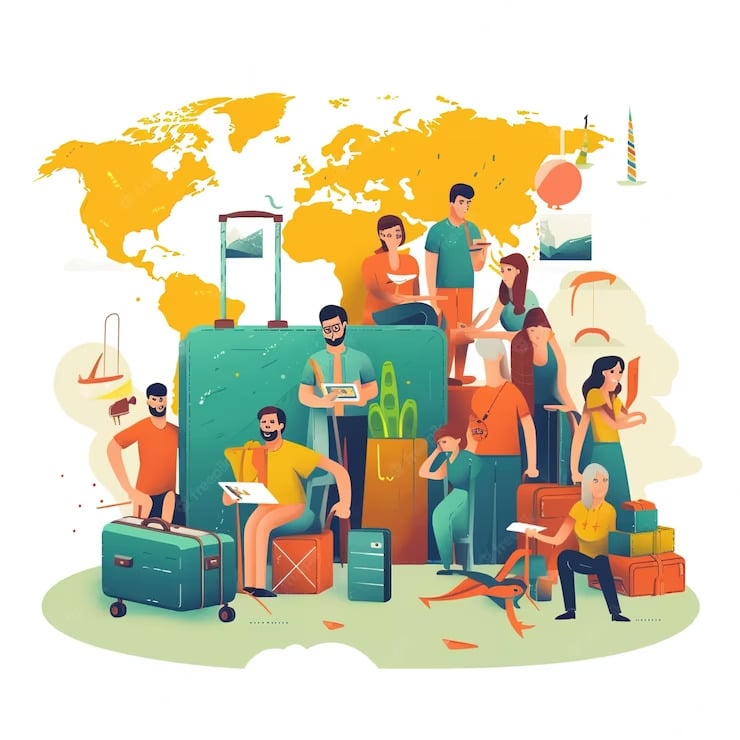
Mass tourism has several advantages, making it an essential part of the tourism industry. Here are some of the benefits of mass tourism:
Boosts Local Economy
Mass tourism can significantly boost the local economy of a tourist destination. It generates much revenue for local businesses, such as hotels , restaurants, and souvenir shops. This, in turn, creates job opportunities for the locals and helps improve their living standards. Mass tourism can also contribute to infrastructure development, such as roads, airports, and public transportation, which can benefit the local community even after the tourists have left.
Increases Cultural Exchange
Mass tourism can increase cultural exchange between tourists and locals. Tourists can learn about the local customs, traditions, and way of life, while locals can learn about the visitors’ culture. This cultural exchange can help to promote understanding and tolerance between different cultures and can also help to preserve the local culture by promoting it to a wider audience.
Provides Affordable Travel Options
Mass tourism provides affordable travel options for people who may not have the means to travel otherwise. The package deals offered by mass tourism companies can be significantly cheaper than individual travel arrangements. This makes travel more accessible to a wider range of people, including those on a budget.
Supports Conservation Efforts
Mass tourism can also support conservation efforts in tourist destinations. The revenue generated by mass tourism can be used to fund conservation projects, such as wildlife conservation and habitat restoration. This can help preserve the destination’s natural beauty and protect it for future generations.
Mass tourism has several advantages, making it an important part of the tourism industry. It can boost the local economy, increase cultural exchange, provide affordable travel options, and support conservation efforts. However, it is important to balance the advantages of mass tourism with its potential negative impacts, such as overcrowding, environmental degradation, and cultural homogenization.
Disadvantages of Mass Tourism

Mass tourism has become increasingly popular in recent years but has drawbacks. Here are some of the disadvantages of mass tourism:
1. Environmental Impact
One of the most significant disadvantages of mass tourism is the environmental impact. Mass tourism can lead to pollution, degradation of natural resources, and damage to ecosystems. The large number of tourists can put a strain on local resources, such as water and energy, and contribute to climate change.
2. Overcrowding
Mass tourism can lead to overcrowding in popular tourist destinations, which can cause inconvenience and discomfort for tourists and locals. Overcrowding can also lead to safety concerns and increase the risk of accidents and incidents.
3. Cultural Impact
Mass tourism can have a negative impact on local cultures and traditions. The influx of tourists can lead to a loss of cultural authenticity and homogenization of local cultures. This can also lead to losing traditional ways of life and displacement of local residents.
4. Economic Impact
While mass tourism can bring economic benefits to a destination, it can also have negative economic impacts. The reliance on tourism can lead to an unstable economy, and the profits from tourism may not benefit local communities. In some cases, tourism can also lead to inflation and increased living costs for locals.
5. Sustainability
Mass tourism is often unsustainable in the long term. The strain on local resources and ecosystems can lead to irreversible damage, and focusing on short-term profits can lead to neglecting long-term sustainability goals.
While mass tourism can bring economic benefits and opportunities for travellers, it is essential to consider its negative impacts on the environment, local communities, and cultures.
Mass Tourism Destinations
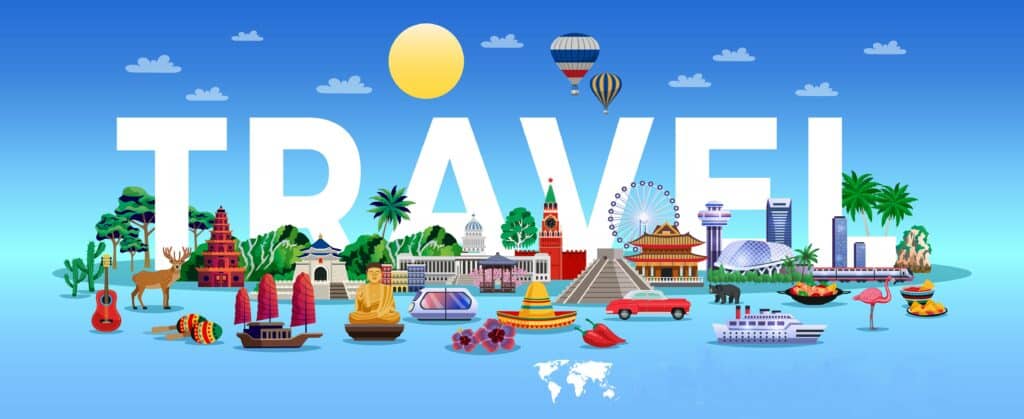
Mass tourism has become popular for people to explore new destinations and experience different cultures. The most popular mass tourism destinations include beaches, mountains, national parks, and historical sites. Here are some examples of popular mass tourism destinations:
Beaches are a popular destination for mass tourism. Some popular beaches include Goa in India, Santorini in Greece, and the Harbor Islands in Boston. These destinations offer beautiful beaches, crystal clear waters, and a variety of activities for tourists to enjoy.
Mountains are another popular destination for mass tourism. Central Massachusetts and the Greater Merrimack Valley are popular destinations for tourists who want to experience the beauty of the mountains. These destinations offer breathtaking views, hiking trails, and other outdoor activities.
National Parks
National parks are also popular destinations for mass tourism. Cape Cod National Seashore is a popular destination for tourists who want to explore the area’s natural beauty. The park offers hiking trails, beaches, and other outdoor activities.
Historical Sites
Historical sites are also popular destinations for mass tourism. The Pyramids of Giza in Egypt and the North of Boston are popular destinations for tourists who want to explore the history of the area. These destinations offer a glimpse into the past and a chance to learn about different cultures.
Overall, there are many popular mass tourism destinations for tourists to explore. Whether you are looking for a beach vacation, a mountain retreat, or a chance to explore historical sites, there is something for everyone.
Impact on Local Communities
Mass tourism significantly impacts local communities, and the effects can be positive and negative. While tourism can bring economic benefits to a region, it can also negatively impact the local culture, jobs, infrastructure, local businesses, gentrification, and over-tourism.
One of mass tourism’s most significant negative impacts on local communities is the erosion of local culture. As more tourists flock to a destination, the local culture can become homogenized, and the unique traditions and ways of life can be lost. This can lead to a loss of identity for the local community and a decline in cultural heritage.
Another negative impact of mass tourism is the effect on jobs. While tourism can create jobs in the hospitality and service industries, it can also lead to a decline in traditional industries. For example, in some regions, farming and fishing have been replaced by tourism, leading to a loss of traditional jobs and a decline in local economies.
Infrastructure can also be negatively impacted by mass tourism. As more tourists visit an area, the demand for infrastructure such as roads, airports, and hotels increases. This can lead to overcrowding, traffic congestion, and strain on local resources.
Local businesses can also be impacted by mass tourism. While some businesses may benefit from increased tourism, others may struggle to compete with larger international chains. This can lead to a decline in local businesses and a loss of economic diversity in the region.
Gentrification is another issue that can arise from mass tourism. As more tourists visit an area, property prices can rise, leading to the displacement of local residents. This can lead to social and economic inequality, as the local community is pushed out of its own neighbourhood.
Finally, mass tourism is a growing concern in many popular tourist destinations. When the number of tourists visiting a destination exceeds the region’s carrying capacity, it can lead to overcrowding, environmental degradation, and a decline in the quality of life for local residents.
In conclusion, while mass tourism can bring economic benefits to a region, it is essential to consider the impact on local communities. The negative impacts of mass tourism can be significant, and it is crucial to find a balance between economic growth and sustainable tourism practices.
Economic Aspects of Mass Tourism
Mass tourism can have a significant impact on the economy of a destination. It can generate income and create employment opportunities, but it can also put a strain on resources and infrastructure.
One of the main benefits of mass tourism is the income it generates for local economies. Tourists spend money on accommodation, food, transportation, and activities, which can contribute to the local economy. According to a report by the Massachusetts Office of Travel and Tourism, travel expenditures in Massachusetts in 2018 generated over $24 billion in direct spending, which supported over 150,000 jobs and generated $1.6 billion in state and local taxes.
However, mass tourism can also put a strain on resources and infrastructure. Popular tourist destinations may struggle to accommodate the influx of visitors during peak season, leading to overcrowding and strain on local resources such as water and energy. Additionally, the increased demand for goods and services can drive up prices, making it harder for locals to afford basic necessities.
Another economic aspect of mass tourism is profit. Large tourism companies may benefit from the high volume of tourists by making significant profits. However, smaller local businesses may struggle to compete with larger companies, leading to a concentration of wealth in the hands of a few.
Overall, the economic impact of mass tourism is complex and multifaceted. While it can generate income and create employment opportunities, it can also strain resources and infrastructure and concentrate wealth in the hands of a few.
Tourist Behavior and Expectations
Tourist behaviour and expectations play a crucial role in the mass tourism industry. Tourists are individuals who travel to different places for leisure, business, or other purposes. They have certain expectations and requirements from their travel experience, which can influence their behaviour during their stay.
One of the primary expectations of tourists is to have a comfortable and enjoyable experience. They expect high-quality accommodations, transportation, food, and entertainment options. Tourists also expect to be treated with respect and hospitality by the locals and the service providers. They want to feel welcomed and appreciated during their stay.
Another important aspect of tourist behaviour is their spending habits. Tourists tend to spend significant money on their travel, which can boost the local economy. However, they also expect value for their money and are likely to avoid places that are overpriced or do not meet their expectations.
Family tourists are a significant segment of the mass tourism industry. They have unique expectations and requirements, such as child-friendly accommodations, entertainment options, and safety measures. Family tourists also tend to plan their trips well in advance and are likely to choose destinations that offer a variety of activities for all members of the family.
Responsible tourism is another emerging trend in the mass tourism industry. Responsible tourists are conscious of their impact on the environment and the local communities. They expect the destinations and service providers to follow sustainable practices and reduce their carbon footprint. Responsible tourists will likely choose eco-friendly accommodations, participate in local conservation efforts, and support local businesses.
Overall, understanding tourist behaviour and expectations is essential for the success of the mass tourism industry. Service providers and destinations that meet and exceed these expectations will likely attract more visitors and generate higher revenues.
Role of Media and Internet
The role of media and the internet has greatly influenced the rise of mass tourism. With the advent of social media platforms such as Instagram, travellers are constantly exposed to images of exotic destinations and experiences, which can influence their travel decisions. In fact, a study suggests that social media has a significant impact on tourists’ choices of travel components, with most studies focusing on the impact of social media on behavioural intention.
The media has also played a vital role in promoting tourism, especially in countries where tourism is a major source of revenue. The media is often used to showcase a destination’s natural beauty, culture, and attractions, which can attract tourists. For example, television shows such as Anthony Bourdain’s “Parts Unknown” and Samantha Brown’s “Places to Love” have helped to promote off-the-beaten-path destinations to a wider audience.
The internet has also revolutionized the way people plan and book their travel. Travellers can now easily research and book flights, accommodations, and activities through online travel agencies and booking platforms. This has led to increased independent travel, where travellers can plan their own itineraries and customize their travel experiences.
However, the internet has also brought about challenges for the tourism industry. With the ease of access to information, travellers are now more aware of the negative impacts of tourism, such as overcrowding, environmental degradation, and cultural commodification. This has led to a rise in sustainable and responsible tourism practices, where travellers seek to minimize their impact on the environment and local communities.
Overall, the role of media and the Internet in mass tourism cannot be overstated. While it has brought about challenges, it has also opened up new opportunities for travellers to explore the world and for destinations to promote themselves to a wider audience.
Tour Operators and Travel Agents

Tour operators and travel agents play a significant role in mass tourism. They are intermediaries between the tourists and the service providers, such as hotels, airlines, and transportation companies. Their main function is to package and sell tours to holiday destinations, including flights, accommodation, and other services.
Travel agents are professionals who provide travel-related services to clients. They offer advice on travel destinations, make reservations for flights, hotels, and other services, and provide information on travel insurance, visas, and other travel-related documents. They earn a commission from the service providers for the services they sell.
On the other hand, tour operators specialize in organizing and selling packaged tours to holiday destinations. They create tour packages that include transportation, accommodation, meals, and other services. They work with travel agents to sell their tour packages to clients. Tour operators profit by buying services from service providers at a discounted rate and selling them to clients at a higher price.
Mass tourism has led to the growth of travel agents and tour operators. They have become essential players in the tourism industry, providing clients with a wide range of services. They have also contributed to the growth of the tourism industry by promoting tourism destinations and creating new tourism products.
One of the main advantages of using travel agents and tour operators is convenience. They provide a one-stop shop for all travel-related services, making it easy for clients to plan their holidays. They also offer expert advice on travel destinations and provide assistance in case of any problems during the trip.
However, there are also some disadvantages to using travel agents and tour operators. One of the main disadvantages is the cost. Travel agents and tour operators charge a commission for their services, which can add up to a significant amount. Moreover, some travel agents and tour operators may not provide accurate information or may misrepresent the services they offer.
In conclusion, travel agents and tour operators are essential players in the mass tourism industry. They provide clients with a wide range of services, including packaged tours, flights, accommodation, and other travel-related services. While they offer convenience and expert advice, they also have disadvantages, such as cost and potential misrepresentation of services.
Environmental Concerns
Mass tourism has been associated with a wide range of environmental concerns. One of the most significant environmental concerns is the impact of tourism on the natural environment. The increase in tourist activities has resulted in a higher demand for natural resources, such as water, energy, and land. This has led to the degradation of natural habitats, deforestation, and soil erosion in some areas.
Another environmental concern is the amount of waste generated by mass tourism. Tourists generate significant waste, including plastic bottles, food packaging, and disposable items. This waste often ends up in landfills or littered in the environment, leading to pollution and negative impacts on wildlife.
Sustainable travel is an approach that seeks to minimize the negative impact of tourism on the environment. This includes promoting green tourism practices, such as using renewable energy sources, reducing waste, and conserving natural resources. Sustainable travel also involves educating tourists about the importance of responsible tourism practices and encouraging them to participate in environmentally friendly activities.
Carrying capacity is another important concept in mass tourism. It refers to the maximum number of tourists a destination can accommodate without causing negative impacts on the environment. When the number of tourists exceeds the carrying capacity of a destination, it can lead to overcrowding, pollution, and damage to natural habitats.
Finally, carbon emissions associated with transportation and accommodation significantly contribute to climate change. Mass tourism is responsible for significant carbon emissions contributing to global warming. Sustainable travel practices, such as using public transportation, choosing eco-friendly accommodations, and offsetting carbon emissions, can help reduce the impact of tourism on climate change.
Future of Mass Tourism
Mass tourism has been a significant contributor to the global economy for decades. However, recent events have highlighted the need for a more sustainable and responsible approach to tourism. The COVID-19 pandemic has caused a significant decline in mass tourism, leading to the closure of many businesses and job losses. The future of mass tourism is uncertain, and it will likely require significant changes to adapt to the new reality.
One of the most significant challenges facing mass tourism is sustainability. The industry significantly impacts the environment, and there is a growing awareness of the need to reduce this impact. Governments and tourism organizations increasingly focus on sustainable tourism practices, such as reducing waste, conserving energy, and protecting natural resources. The future of mass tourism will depend on its ability to adapt to these new practices and become more sustainable.
Another challenge facing mass tourism is the changing preferences of travellers. Many people are now looking for more authentic and immersive travel experiences rather than traditional mass tourism offerings. This trend will likely continue, and mass tourism must adapt to meet these changing preferences.
Technology is also likely to play a significant role in the future of mass tourism. Advances in technology are making travel more accessible and convenient, and this trend will likely continue. For example, virtual reality technology is already used to provide immersive travel experiences, which will likely become more widespread.
In conclusion, the future of mass tourism is uncertain, but it is clear that significant changes will be required to adapt to the new reality. Sustainability, changing traveller preferences, and technology will likely be the key drivers of change in the industry. The industry’s challenge will be adapting to these changes while continuing to provide high-quality travel experiences for its customers.
In conclusion, mass tourism is a significant part of the tourism industry, associated with package holidays, popular tourist attractions, and well-known resorts. However, the growth of mass tourism has led to several challenges, including over-tourism, environmental degradation, and cultural homogenization.
The future of mass tourism is uncertain, with several factors influencing its growth and development. The rise of sustainable tourism, technological advancements, and changing consumer preferences will likely impact mass tourism’s future.
Despite the challenges, mass tourism continues to provide economic benefits to many destinations. However, balancing economic benefits with environmental and social sustainability is essential to ensure the industry’s long-term viability.
Overall, the future of mass tourism is complex and multifaceted, with several challenges and opportunities. It is crucial to adopt a holistic approach to tourism development, taking into account the economic, social, and environmental impacts of mass tourism.
Are We Ready for the Return of Mass Tourism?
A new book explores the impact tourism has had on our politics, our planet, and our selves..

It took a global pandemic for many of us to realize that we live in what Italian journalist and social theorist Marco D’Eramo calls the “Age of Tourism.” As he writes in his new book, The World in a Selfie: An Inquiry Into the Tourist Age, tourism is the defining industry of the twenty-first century. Tourism was an $8.8 trillion business in 2018, or 10.4 percent of global gross domestic product. It is also an industry upon which, D’Eramo writes, “a galaxy of institutions and businesses” depend, from hotels and restaurants to “the mock Gladiators who charge for photos in front of the Colosseum.” When the pandemic struck, flights were canceled and cities emptied, revealing just how reliant we all are on those strange creatures: tourists.
“Why hasn’t tourism’s importance fully registered before the Covid-19 pandemic and the lockdowns?” he asks. “Because tourists themselves are hard to take seriously.” The tourist’s ill reputation stretches back centuries. “Of all noxious animals too the most noxious is the tourist,” the Reverend Francis Kilvert wrote in his diary in 1870. “If there is one thing more hateful than another it is being told what to admire and having objects pointed out to one with a stick.” The tourist’s harmful impact on the places they visited was also apparent early on. “The Playground of Europe has been swamped with sightseers and the sanctuaries where Chaos and Old Night once reigned supreme have been desecrated and vulgarized,” wrote Alexander Innes Shand in 1903.
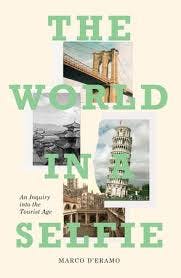
These complaints might easily have been made today. Even Kilvert’s characterization of tourists as “noxious animals” is echoed in the common description of “herds” of tourists getting off buses and cruise ships. And yet, strangely, most of those who malign tourists are often tourists themselves. D’Eramo takes up this paradox and brings into clearer focus the many confounding aspects of tourism: why we hate tourists and yet continue to travel, and why we divvy our leisure time into a structured regimen of sightseeing that resembles something like work.
D’Eramo is gentler on the figure of the tourist than many of his peers and predecessors. He locates the yearning to travel in a “positive alienation” that drives us to seek out the world. He also notes the class-based prejudice and racism embedded in tourist-hating. American tourists reserve their worst prejudice for Japanese tourists, and the wealthy save most of their hatred for the lower classes on package tours who aren’t sufficiently “off the beaten path.”
As we brace for a wave of postpandemic travel, D’Eramo refocuses our attention from the hateful tourist, who is almost all of us, toward tourism as a set of industries, with tentacles that reach everywhere, which has reshaped our cities and politics and almost every facet of life on earth.
Consider the ski mountain. “To ski down a snow-covered mountain is to partake in one of the most graceful sports, and all it requires is the pure force of gravity and the use of the planet’s contours,” D’Eramo writes:
Yet in order to achieve this almost immaterial elegance, it is also necessary to build imposing ski lifts, chairlifts and cable cars. Snow cannons are needed because, even with constant snowfall, skiing erodes the snow on the slopes—‘natural snow’ on its own would never suffice, and that’s even before we consider the effects of climate change. Then there are the roads that cut across valleys to reach the ski resorts, and the buildings that spread like weeds across the countryside.
Once-deserted land becomes a “metropolitan hive” filled with temporary inhabitants who use electricity, public services, and water. “Walking through the mountains in summer, one can see for oneself the devastation produced by these winter pursuits,” D’Eramo writes.
This is where D’Eramo is at his best, dissecting the consequences of seemingly simple activities, and the impact of travel on the world at large. The World in a Selfie is digressive, the chapters like a series of meditations that touch on various aspects of travel and tourism. He considers Las Vegas, and the city of Lijang in northwest China. He elaborates on the history of tourism, its colonial roots and its early forms, as well as its contemporary relationship to multiculturalism. His work is at times densely philosophical (see the chapter titled “Long Live Alienation! Peeling the Hegelian Onion”) but also whimsical (he writes briefly from the perspective of “an earthologist friend,” studying humans as we might study extraterrestrials). The World in a Selfie is occasionally disjointed, but this alternation between objects of inquiry is also part of its charm and provides us with a sense of tourism’s broad reach.
D’Eramo pays particular attention to how tourism has reshaped our cities over the course of the last century. He is not only troubled by destructive acts, like tunneling through mountains to create ski resorts, but also by acts of “preservation.” Some of his sharpest words are reserved for Unesco, the world heritage organization. He lambasts Unesco’s focus on conservation at the expense of contemporary life and its demarcation of “old cities” that become tourist traps and the backdrops for festivals. “Unesco’s ‘World Heritage’ listing is the kiss of death,” D’Eramo writes. “Once the label is affixed, the city’s life is snuffed out; it is ready for taxidermy.” Over the last 20 years, the number of sites designated by Unesco as worthy of conservation has exploded, producing ever more cities whose centers are artificially fixed in time.
All of this is related to one of tourism’s great conundrums: the problem of authenticity. What does it even mean to see an “authentic place?” And what does it mean to preserve that authenticity? D’Eramo devotes a chapter to the case of Lijang. After a devastating earthquake in 1996, Unesco declared Lijang’s “Old Town” a World Heritage Site, despite the fact that “there was nothing to ‘conserve’ or ‘preserve’ in the normal sense, as almost everything was destroyed by the earthquake.” With World Bank funding, however, the damaged high-rises in Lijang’s center were razed and reconstructed to build modern homes that had antique exteriors. Monuments were restored that had not even existed before the earthquake; the Mu Fu Palace, a residence that might have been built as early as the fourteenth century, became a primary attraction. But it hadn’t been destroyed in the 1996 earthquake—it had been destroyed in a succession of earthquakes, so that nothing was left of the original by the nineteenth century. Its “restoration,” then, was a kind of imagining of a distant phantom, with contemporary tourism in mind. Railways and motorways were built that led to Lijang, and in the space of 15 years, the small mountain town came to attract more tourists annually than all of Greece. Due to this influx of tourism, it has grown into a bustling city, and skyscrapers surround the manufactured old town. Meanwhile, the natural resources that surround Lijang have felt the strain: The nearby glacier of the Jade Dragon Snow Mountain has begun to melt.
Tourism’s environmental impact has become a point of concern even for the travel industry’s biggest boosters. “Over the last year, the travel world woke up to the implications of climate change and its contributions to global warming,” read the introduction of the “52 Places to go in 2020” package in The New York Times, which dropped shortly before the pandemic was supposed to bring the tourism industry to a halt. The result of this “waking up,” insofar as 52 Places was concerned, was a messy amalgamation of destinations seeking to market themselves as environmentally conscious (see: “Necker Island, the private island owned by Richard Branson, will finish rebuilding by April, and introduce uniforms made from recycled plastic found in ocean”) and places that are themselves disappearing, at least in part due to the effects of travel (“With that mile-thick ice sheet melting fast, and two new international airports slated to open in 2023, the time to explore an untrammeled, intact Greenland is now”). These contortions are evidence that many have entered a new era of guilt about travel and its consequences, particularly harmful emissions from airplanes. Even those deeply enmeshed in the industry have a growing sense that there is something inherently bad about tourism but have little intention to meaningfully change it.
D’Eramo mocks the idea of “sustainable travel” as oxymoronic but writes less than he might about the ruination of the world at the hands of what he calls “the world’s most polluting industry.” The environmental fallout from tourism is perhaps the pinnacle of the paradoxes he describes: the way in which individual yearning can become, in aggregate, one of the most destructive forces on earth. There are, certainly, better and worse ways to travel. There are ways to calculate individual impact, environmental and cultural, that are worthwhile. But there still needs to be a more radical shift in our thinking about travel, beyond the token Necker Islands of the world.
In his final chapter, D’Eramo envisions future generations looking back curiously at tourism. “The tourist will perhaps be a rather enigmatic figure from the past, like the haruspex, the almoner or the gleaner,” he writes. “Or perhaps it will be considered a temporary human illness, like that of the mad travelers of the nineteenth century.” What he means, he says, is not that humans will stop moving around, but that this age of tourism, wherein society and politics are geared so heavily toward it, will come to an end.
This was, after all, the year the planes were supposed to stop but didn’t. It was instead a year when many near-empty flights ran so that airlines wouldn’t lose expensive runway slots at Heathrow . It was a year when the coronavirus flared across Europe because of people’s insatiable need to travel. This year has not made it any clearer what the end of this age of tourism would look like, but it has made clear just how tenacious tourism’s hold on society has been—and how it simply cannot go on like this.
Sophie Haigney writes about visual art and books for The New York Times, The Nation, The Baffler, and others.


Sign Up Today
Start your 14 day free trial today

The History Hit Miscellany of Facts, Figures and Fascinating Finds
Thomas Cook and the Invention of Mass Tourism in Victorian Britain


Harry Sherrin
03 mar 2022.

After its inception in the mid-19th century, the travel agency Thomas Cook pioneered the development of mass tourism, launching the world’s first travel guidebooks, package holidays and round-the-world tours.
Thomas Cook grew from humble beginnings, carrying temperance activists to meetings by train in the English Midlands, into a vast multinational company. In the 19th century, its tours catered to increasingly wealthy Victorians during the height of the British Empire , successfully championing a travel revolution.
But in 2019, Thomas Cook declared bankruptcy. It was the world’s oldest and longest-serving tour operator at the time, having existed for more than a century and a half and endured world wars, economic crises and the rise of the internet.
Here’s the story of Thomas Cook and the advent of global mass tourism.
Temperance trips
Thomas Cook (1808-1892), a devout Christian and advocate of the temperance movement, organised a one-day rail excursion for a temperance meeting in 1841. The trip, on 5 July, involved a train journey between Leicester and Loughborough, courtesy of an arrangement with the Midland Counties Railway Company.
Cook continued this practice over the following years, organising railway journeys for temperance activist groups around the Midlands of England. In 1845, he organised his first for-profit excursion, in the form of a trip to Liverpool for passengers from three locations – Derby, Nottingham and Leicester.
For this tour, Cook crafted a passengers’ handbook, now widely considered a precursor to the popular travel guidebook that would be produced to accompany travel excursions for decades to follow.
Branching out to Europe

English tourist agent Thomas Cook and party in the ruins of Pompeii, Easter 1868. Cook is seated on the ground, just to right of center, in this carte-de-visite photograph.
Image Credit: Granger Historical Picture Archive / Alamy Stock Photo
By the 1850s, Cook had his sights set further afield than England. For the Paris Exposition of 1855 , for example, he organised guided trips from Leicester to Calais.
That same year, he also oversaw international ‘package’ tours, carrying parties from England to various cities in Europe, including Brussels, Strasbourg, Cologne and Paris . These excursions offered passengers everything needed to sustain them on their journeys, including transport, accommodation and meals.
By the 1860s, Cook’s sporadic temperance trips had grown into a profitable mass tourism operation – thought to be the first in global history. In response to his newfound success, Cook opened his first high-street store in London’s Fleet Street in 1865.
That same year, the London Underground opened as the first subterranean railway in the world. London was the most populous city on the planet at the time, and the enterprises of the British Empire saw wealth pouring into mainland Britain. With this came disposable income and, by extension, more Britons willing to spend large sums on international holidays.
For Cook, business was booming.
Going global
After tackling Europe, Thomas Cook went global. Now a father-son business comprising Thomas Cook and his son, John Mason Cook, the tour agency launched its first US tour in 1866. John Mason guided it personally.
A few years later, Thomas Cook escorted passengers on the company’s first trip to North Africa and the Middle East, stopping in Egypt and Palestine.
Tourism for Britons at the time was intimately tied to the endeavours of the British Empire. As British armies entered Egypt and Sudan in the late 19th century, so too did tourists, traders, teachers and missionaries, eager to capitalise on the newfound accessibility of far-flung nations and the relative safety offered by the presence of British forces there.
Thomas Cook and Son was even responsible for delivering military personnel and mail to British Egypt in the late 19th century.

1872 marked a huge moment in the history of Thomas Cook and indeed global tourism. That year, Thomas Cook escorted the first known round-the-world tour. The lengthy excursion, which lasted more than 200 days and covered nearly 30,000 miles, was targeted at wealthy Victorians – those with the time, funds and proclivity to see the world’s many cultures.
In that decade, Thomas Cook also helped invent the traveler’s cheque: the company offered a ‘Circular Note’ to its passengers which could be exchanged for currency around the world.
In the 1920s, Thomas Cook and Son launched the first-known tour through Africa. The excursion lasted some 5 months and took passengers from Cairo in Egypt down to the Cape of Good Hope.
Conquering air and sea
John Mason Cook took over primary leadership of the company in the 1870s, overseeing its continued expansion and the opening of various new offices around the world.
With this expansion came the launching of Thomas Cook’s company-owned steamers in the late 19th century. In 1886, a fleet of luxury steamers opened to passengers, offering cruises along the Nile.

A Thomas Cook flyer from 1922 advertising cruises down the Nile. This kind of travel has been immortalised in works such as ‘Death on the Nile’ by Agatha Christie.
Image Credit: Wikimedia Commons
Thomas Cook eventually took to the skies in the 1920s, overseeing its first guided tour involving air travel in 1927. The trip carried 6 passengers from New York to Chicago, and also included accommodation and tickets for a Chicago boxing fight.
Into the modern era
During World War Two , Thomas Cook was briefly enlisted to assist with the ‘enemy mail service’, essentially the covert delivery of post from Allied regions to occupied territories.
The company went on to change hands several times during the 20th century, yet it managed to stay afloat despite various buyouts, economic crises and the rise of online travel agents.
In 2019, Thomas Cook was handed a bill of some £200 million by the Royal Bank of Scotland and other financial institutions. Unable to source the funds, the company declared bankruptcy.
At the time, Thomas Cook was responsible for more than 150,000 holiday-goers abroad. When the company collapsed, new arrangements had to be made to return every stranded customer home. The UK Civil Aviation Authority, which assisted with the repatriation efforts, called it the largest-ever peacetime repatriation in British history.

You May Also Like
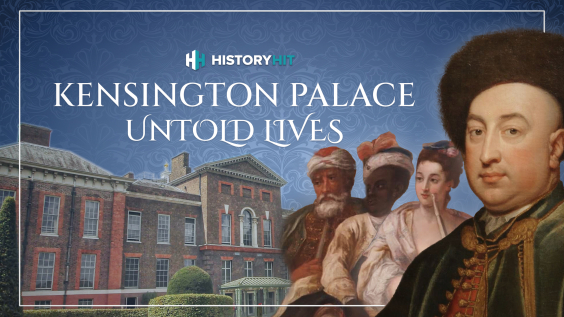
Mac and Cheese in 1736? The Stories of Kensington Palace’s Servants
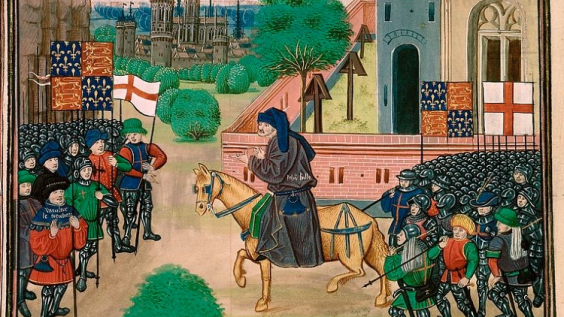
The Peasants’ Revolt: Rise of the Rebels
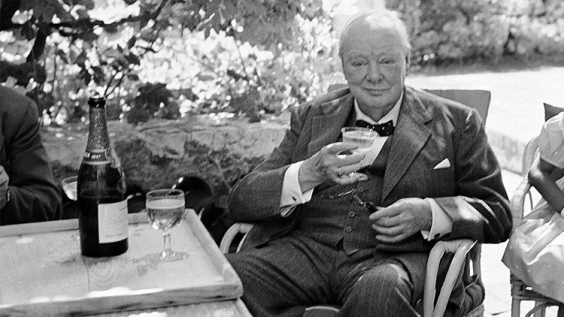
10 Myths About Winston Churchill
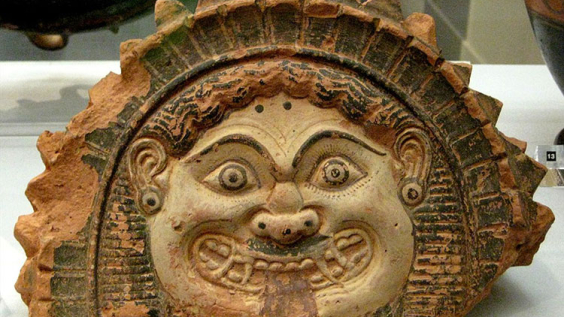
Medusa: What Was a Gorgon?
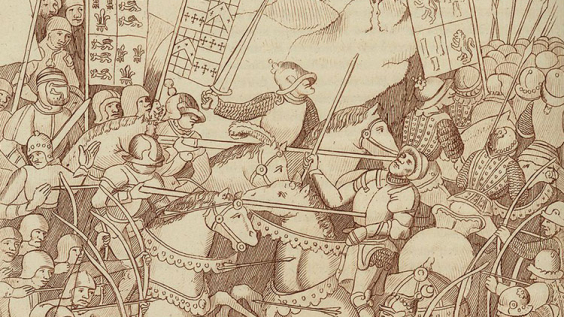
10 Facts About the Battle of Shrewsbury
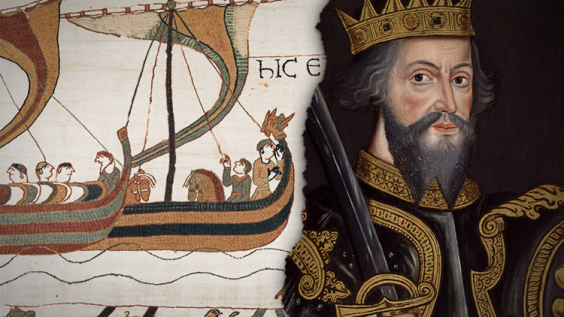
5 of Our Top Podcasts About the Norman Conquest of 1066
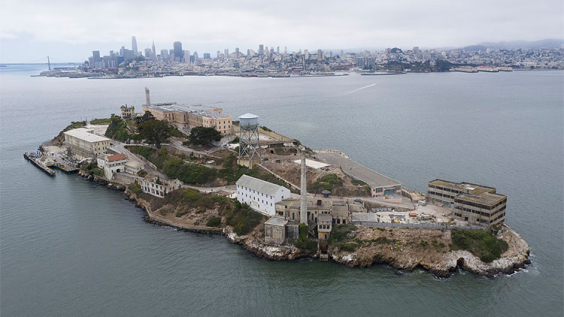
How Did 3 People Seemingly Escape From Alcatraz?

5 of Our Top Documentaries About the Norman Conquest of 1066
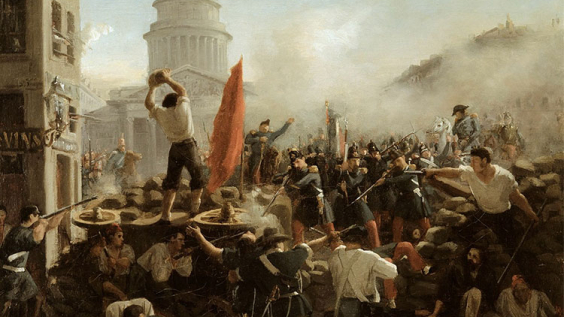
1848: The Year of Revolutions
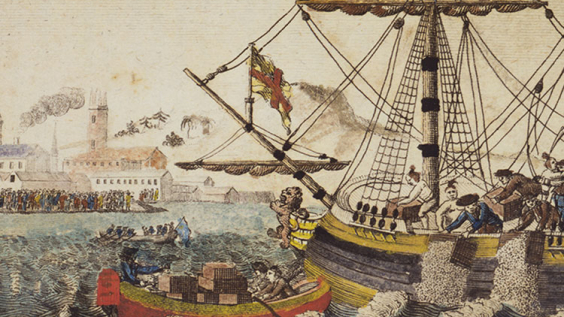
What Prompted the Boston Tea Party?

15 Quotes by Nelson Mandela

The History of Advent
UK lawmakers to count environmental cost of mass tourism

Tourism can have big impacts on the environment and local communities. Image: REUTERS/Soe Zeya Tun
.chakra .wef-1c7l3mo{-webkit-transition:all 0.15s ease-out;transition:all 0.15s ease-out;cursor:pointer;-webkit-text-decoration:none;text-decoration:none;outline:none;color:inherit;}.chakra .wef-1c7l3mo:hover,.chakra .wef-1c7l3mo[data-hover]{-webkit-text-decoration:underline;text-decoration:underline;}.chakra .wef-1c7l3mo:focus,.chakra .wef-1c7l3mo[data-focus]{box-shadow:0 0 0 3px rgba(168,203,251,0.5);} Acacia Redding

.chakra .wef-9dduvl{margin-top:16px;margin-bottom:16px;line-height:1.388;font-size:1.25rem;}@media screen and (min-width:56.5rem){.chakra .wef-9dduvl{font-size:1.125rem;}} Explore and monitor how .chakra .wef-15eoq1r{margin-top:16px;margin-bottom:16px;line-height:1.388;font-size:1.25rem;color:#F7DB5E;}@media screen and (min-width:56.5rem){.chakra .wef-15eoq1r{font-size:1.125rem;}} Future of the Environment is affecting economies, industries and global issues

.chakra .wef-1nk5u5d{margin-top:16px;margin-bottom:16px;line-height:1.388;color:#2846F8;font-size:1.25rem;}@media screen and (min-width:56.5rem){.chakra .wef-1nk5u5d{font-size:1.125rem;}} Get involved with our crowdsourced digital platform to deliver impact at scale
Stay up to date:, future of the environment.
British lawmakers said on Thursday they would count the environmental cost of mass tourism amid warnings that leisure trips pose an ever greater threat to the planet.
Fast-growing tourism accounts for about 5% of greenhouse gas emissions worldwide while floods of visitors are damaging a host of hot spots, said the Environmental Audit Committee, which scrutinises the impact of government policy on the environment.
From queues up Everest to cruisers crowding Venice, 'must-see' landmarks are increasingly imperilled by their very popularity. And that's before the spew of emissions from planes, trains and automobiles is taken into account.
"Now that summer is here, families are looking forward to a well-earned holiday," committee chairwoman Mary Creaghin said in a statement. "But when we book a cruise, flights or visit a popular tourist destination, it's easy to forget about the environmental impact our holidays are having."
A study last year found that a global boom in tourism was complicating the drive to slow climate change, with flights the biggest single contributor to greenhouse gas emissions.
Some 1.4 billion people were international tourists in 2018, 6% up on the year before, as cheap flights and easy connections help fuel mass tourism, according to the World Tourism Organization, a United Nations agency.
Britain makes billions of pounds from overseas visitors - drawn by everything from royal intrigue to cutting-edge culture.
But the cost is also steep, with deep division over whether to expand London Heathrow, already Europe's busiest airport.
Have you read?
Our tourism system is broken – time to customize, tourism is damaging the ocean. here’s what we can do to protect it.
Environmentally-sensitive tourism could boost economic growth and protect the environment, the lawmakers said, but in many cases "overtourism" had harmed people and their landmarks.
Thailand has said it will close access to Maya Bay, which featured in the hit film "The Beach" starring Leonardo DiCaprio, for four months a year after visitors damaged coral reefs.
Cities from Italy's Venice to Malaysia's George Town have also seen protests over the huge influxes of tourists, which can cause damage, boost rents and drive out local life.
The committee said it would consider whether the government should support sustainable tourism, if it should take more responsibility for the impact of British visitors' actions abroad, and how sustainable travel could help cut emissions.
Action is urgent to monitor the impact of tourism and protect treasured destinations, said Ben Lynam from the Travel Foundation, a charity that encourages sustainable tourism.
"No one benefits from getting to a point where things are so bad that you have to actually close attractions down," he told the Thomson Reuters Foundation.
Don't miss any update on this topic
Create a free account and access your personalized content collection with our latest publications and analyses.
License and Republishing
World Economic Forum articles may be republished in accordance with the Creative Commons Attribution-NonCommercial-NoDerivatives 4.0 International Public License, and in accordance with our Terms of Use.
The views expressed in this article are those of the author alone and not the World Economic Forum.
Related topics:
The agenda .chakra .wef-n7bacu{margin-top:16px;margin-bottom:16px;line-height:1.388;font-weight:400;} weekly.
A weekly update of the most important issues driving the global agenda
.chakra .wef-1dtnjt5{display:-webkit-box;display:-webkit-flex;display:-ms-flexbox;display:flex;-webkit-align-items:center;-webkit-box-align:center;-ms-flex-align:center;align-items:center;-webkit-flex-wrap:wrap;-ms-flex-wrap:wrap;flex-wrap:wrap;} More on Nature and Biodiversity .chakra .wef-17xejub{-webkit-flex:1;-ms-flex:1;flex:1;justify-self:stretch;-webkit-align-self:stretch;-ms-flex-item-align:stretch;align-self:stretch;} .chakra .wef-nr1rr4{display:-webkit-inline-box;display:-webkit-inline-flex;display:-ms-inline-flexbox;display:inline-flex;white-space:normal;vertical-align:middle;text-transform:uppercase;font-size:0.75rem;border-radius:0.25rem;font-weight:700;-webkit-align-items:center;-webkit-box-align:center;-ms-flex-align:center;align-items:center;line-height:1.2;-webkit-letter-spacing:1.25px;-moz-letter-spacing:1.25px;-ms-letter-spacing:1.25px;letter-spacing:1.25px;background:none;padding:0px;color:#B3B3B3;-webkit-box-decoration-break:clone;box-decoration-break:clone;-webkit-box-decoration-break:clone;}@media screen and (min-width:37.5rem){.chakra .wef-nr1rr4{font-size:0.875rem;}}@media screen and (min-width:56.5rem){.chakra .wef-nr1rr4{font-size:1rem;}} See all

Funding the green technology innovation pipeline: Lessons from China
May 8, 2024

G7 agrees to phase out use of unabated coal power plants, and other nature and climate stories you need to read this week
May 6, 2024

How to navigate sustainability in the automotive industry
Lena McKnight and Stefan Fahrni
May 2, 2024

Why this Japanese circular built environment makes economic and environmental sense
Anis Nassar, Sebastian Reiter and Yuito Yamada
April 30, 2024

Cambodian mangroves home to more than 700 wildlife species, a new survey finds
Cristen Hemingway Jaynes

Robot rock stars, pocket forests, and the battle for chips - Forum podcasts you should hear this month
Robin Pomeroy and Linda Lacina
April 29, 2024
Mass tourism
- Living reference work entry
- Later version available View entry history
- First Online: 01 January 2015
- Cite this living reference work entry

- Nikola Naumov 3 &
- David Green 3
291 Accesses
Mass tourism refers to the movement of a large number of organized tourists to popular holiday destinations for recreational purposes. It is a phenomenon which is characterized by the use of standardized package products and mass consumption. Conceptually, this type of tourism features standardized leisure products and experiences packaged for mass tourists (Poon 1993 ).
History and development
The beginning of mass tourism is largely related to various changes, which occurred in the industrial societies in the second half of the twentieth century. In fact, the history of mass tourism began in 1851 when Thomas Cook led a mass of tourists to the Great Exhibition in London (Page 2012 ). The growth of leisure travel and its importance were a result of the increased spending power, personal mobility, development of public transport, and internationalization in modern communities (Bramwell 2004 ). The emergence of paid holidays, increased leisure time, and the development of railway networks...
This is a preview of subscription content, log in via an institution to check access.
Access this chapter
Institutional subscriptions
Bramwell, B. 2004 Mass Tourism, Diversification and Sustainability in Southern Europe’s Coastal Regions. In Coastal Mass Tourism: Diversification and Sustainable Development in Southern Europe, B. Bramwell, ed., pp.1-31. Clevedon: Channel View.
Google Scholar
Manera, C., L. Segreto, and M. Pohl 2009 The Mediterranean as a Tourist Destination: Past, Present, and Future of the First Mass Tourism Resort Area. In Europe at the Seaside: The Economic History of Mass Tourism in the Mediterranean, L. Segreto, C. Manera and M. Pohl, eds., pp.1-11. Oxford: Berghahn.
Page, S. 2012 Tourism Management: An Introduction . Oxford. Butterworth-Heinemann.
Poon, A. 1993 Tourism, Technology and Competitive Strategies. London: CABI.
Weaver, D. 2007 Towards Sustainable Mass Tourism: Paradigm Shift or Paradigm Nudge? Tourism Recreation Research 32(3):65-69.
Article Google Scholar
Download references
Author information
Authors and affiliations.
Department of Geography, King’s College London, WC2R 2LS, Strand, London, UK
Nikola Naumov & David Green
You can also search for this author in PubMed Google Scholar
Corresponding author
Correspondence to Nikola Naumov .
Editor information
Editors and affiliations.
School of Hospitality Leadership, University of Wisconsin-Stout, Menomonie, Wisconsin, USA
Jafar Jafari
School of Hotel and Tourism Management, The Hong Kong Polytechnic University, Hong Kong, Hong Kong SAR
Honggen Xiao
Rights and permissions
Reprints and permissions
Copyright information
© 2014 Springer International Publishing Switzerland
About this entry
Cite this entry.
Naumov, N., Green, D. (2014). Mass tourism. In: Jafari, J., Xiao, H. (eds) Encyclopedia of Tourism. Springer, Cham. https://doi.org/10.1007/978-3-319-01669-6_378-1
Download citation
DOI : https://doi.org/10.1007/978-3-319-01669-6_378-1
Received : 11 July 2014
Accepted : 11 July 2014
Published : 11 September 2015
Publisher Name : Springer, Cham
Online ISBN : 978-3-319-01669-6
eBook Packages : Springer Reference Business and Management Reference Module Humanities and Social Sciences Reference Module Business, Economics and Social Sciences
- Publish with us
Policies and ethics
Chapter history
DOI: https://doi.org/10.1007/978-3-319-01669-6_378-2
DOI: https://doi.org/10.1007/978-3-319-01669-6_378-1
- Find a journal
- Track your research
Winter is here! Check out the winter wonderlands at these 5 amazing winter destinations in Montana
- Travel Tips
What Is Mass Tourism
Published: December 12, 2023
Modified: December 28, 2023
by Hermione Trull
- Plan Your Trip
- Sustainability
Introduction
Travel and tourism have become increasingly popular in recent years, experiencing a significant growth in numbers. This surge in travel can be attributed to various factors, such as increased disposable income, improved transportation systems, and the growing desire for new experiences and adventure. However, with this exponential growth comes the concept of mass tourism, which has both positive and negative implications.
Mass tourism is a term used to describe the phenomenon of large numbers of people traveling to and visiting the same destinations at the same time. It involves the mass movement of tourists to popular hotspots, often resulting in overcrowding, strain on local resources, and potential negative impacts on the environment, society, and local economies.
This article will delve into the concept of mass tourism, exploring its definition and the factors that contribute to its rise. We will also discuss the environmental, social, and economic impacts of mass tourism, as well as consider sustainable tourism as an alternative approach to travel. By understanding the issues associated with mass tourism and exploring sustainable solutions, we can work towards a more responsible and balanced approach to travel and tourism.
Definition of Mass Tourism
Mass tourism can be defined as a form of tourism that involves the movement of large numbers of people to the same tourist destinations, typically popular and well-known places. It is characterized by the concentration of visitors in specific areas and the simultaneous arrival of tourists during peak seasons.
The key aspect of mass tourism is the sheer volume of tourists visiting a particular location, often resulting in overcrowding. These destinations are often marketed as must-visit places, attracting visitors from all over the world. Examples of popular mass tourism destinations include iconic landmarks like the Eiffel Tower in Paris, the Taj Mahal in India, or the Great Wall of China.
Mass tourism is facilitated by various factors, such as affordable transportation options, the availability of budget accommodations, and the influence of media and advertising. With the rise of social media and travel influencers, certain destinations have experienced a surge in popularity, contributing to the phenomenon of mass tourism.
It is important to note that mass tourism is not inherently negative. It can bring economic benefits to local communities, creating jobs and generating revenue through visitor spending. However, it is essential to recognize and address the potential negative impacts that mass tourism can have on the environment, local culture, and the well-being of residents in these destinations.
The concept of mass tourism is closely related to the idea of overtourism, which refers to the point at which the number of tourists overwhelms the capacity and limits of a destination. When a destination experiences overcrowding and is unable to sustain the influx of tourists, it can lead to negative consequences for both the visitors and the local community.
Overall, the definition of mass tourism revolves around the movement of a large number of people to specific destinations, resulting in overcrowding and potential negative impacts. By understanding this concept, we can explore strategies to mitigate the challenges associated with mass tourism and promote more sustainable and responsible travel practices.
Factors Contributing to Mass Tourism
Mass tourism is influenced by a variety of factors that contribute to its growth and popularity. Understanding these factors can help shed light on the reasons behind the rise of mass tourism and the challenges it presents.
1. Accessibility: Improved transportation systems, including affordable flights, high-speed trains, and cruise ships, have made travel more accessible to people around the world. This increased connectivity has made it easier for individuals to reach popular destinations, resulting in higher tourist numbers.
2. Globalization: The interconnectedness of the world through technology and communication has made travel more appealing and feasible. People are exposed to different cultures, destinations, and attractions, fueling their desire to explore the world and check off popular destinations from their bucket lists.
3. Marketing and Advertising: Effective marketing campaigns and advertising play a crucial role in promoting destinations and attracting tourists. Through enticing visuals, persuasive narratives, and strategic branding, destinations are positioned as must-visit places, driving the demand for mass tourism.
4. Social Media and Influencers: The advent of social media platforms has revolutionized the way people travel. Travel influencers and bloggers provide inspiration, recommendations, and firsthand experiences, creating a desire among their followers to visit the same destinations. The viral nature of content on social media has contributed to the rapid growth of mass tourism.
5. Economic Factors: Economic considerations also play a significant role in mass tourism. Affordable accommodation options, discounted travel packages, and competitive prices make travel more accessible and appealing to a larger audience. Additionally, the economic benefits that tourism brings to local communities, such as job creation and increased revenue, further incentivize destinations to cater to mass tourism.
6. Political Stability: Political stability and the absence of conflicts or security concerns in a destination can greatly influence the growth of mass tourism. Tourists are more likely to visit places that are perceived as safe and stable, leading to increased visitor numbers.
While these factors contribute to the rise of mass tourism, it is important to recognize the potential negative impacts that can arise from the overwhelming influx of tourists. Balancing the desire for travel with sustainability and responsible tourism practices is crucial in managing the growth of mass tourism and its associated challenges.
Environmental Impacts of Mass Tourism
Mass tourism can have significant environmental impacts on the destinations it attracts. The sheer volume of tourists, coupled with unsustainable practices, can put a strain on natural resources, ecosystems, and contribute to climate change. Here are some key environmental impacts of mass tourism:
1. Overcrowding: Popular tourist destinations often experience overcrowding during peak seasons, which can lead to congestion and pressure on infrastructure. This can result in increased pollution, waste generation, and stress on local ecosystems.
2. Loss of Biodiversity: In some cases, mass tourism can lead to the destruction of natural habitats and loss of biodiversity. The development of hotels, resorts, and tourist infrastructure can encroach upon sensitive ecosystems, displacing wildlife and disrupting their habitats.
3. Pollution: The increased number of visitors brings with it an increase in pollution. Air pollution from transportation, such as planes and cars, and water pollution from cruise ships and recreational activities, can have detrimental effects on the environment. Improper waste management and littering can also degrade natural ecosystems.
4. Resource Depletion: The high demand for resources by tourists, including water, energy, and food, can deplete local resources. The extraction of water for hotels and resorts can strain water sources, especially in regions with limited water availability. The consumption of energy and non-renewable resources can contribute to environmental degradation.
5. Climate Change: Mass tourism is a significant contributor to carbon emissions due to transportation, accommodation, and recreational activities. Air travel, in particular, emits greenhouse gases that contribute to climate change. The increased carbon footprint from mass tourism can exacerbate the effects of global warming and impact local ecosystems.
6. Disturbance of Natural Ecosystems: Activities associated with mass tourism, such as hiking, snorkeling, and wildlife viewing, can disrupt natural ecosystems. Trampling on delicate flora and fauna, disturbing nesting sites, and stressing wildlife can have long-term consequences on the biodiversity and ecological balance of the destination.
Addressing these environmental impacts requires a concerted effort from both tourists and destinations. Implementing sustainable practices, such as promoting responsible tourism, investing in renewable energy, managing waste effectively, and preserving natural habitats, can help mitigate the negative effects of mass tourism on the environment. Additionally, raising awareness among tourists about their role in minimizing their ecological footprint and respecting natural resources is essential for long-term sustainable tourism.
Social and Cultural Impacts of Mass Tourism
Mass tourism can have profound social and cultural impacts on the destinations and local communities it attracts. While tourism can bring economic opportunities and cultural exchange, the rapid growth and influx of tourists can also have negative consequences. Here are some key social and cultural impacts of mass tourism:
1. Crowding and Displacement: The sheer numbers of tourists can result in overcrowding in popular tourist destinations. This can lead to a loss of quality of life for local residents, as public spaces become crowded and potentially inaccessible. Local communities may also face difficulties accessing essential services due to the prioritization of catering to tourists. In extreme cases, the displacement of locals from their homes and neighborhoods to make way for tourism infrastructure can occur.
2. Loss of Authenticity: Mass tourism can lead to the commodification and commercialization of local cultures and traditions. Tourist areas may be transformed to cater to the desires of visitors, eroding the authentic character of the destination. This can result in the loss of traditional practices, language, and customs, as local communities adopt tourist-friendly activities and performances.
3. Cultural Appropriation: The rise of mass tourism can bring with it the risk of cultural appropriation. Tourists may engage in activities or wear clothing that is significant to the local culture without appropriately understanding or respecting their significance. This can lead to the exploitation of cultural heritage and the misrepresentation of local traditions.
4. Strain on Infrastructure and Services: The influx of tourists can strain local infrastructure, including transportation, healthcare, and public facilities. Local communities may find it challenging to cope with the increased demands on resources, resulting in inadequate services for both tourists and residents.
5. Social Tensions: The presence of mass tourism can create social tensions between tourists and local communities. Differences in language, behavior, and cultural expectations can lead to misunderstandings and conflicts. Additionally, the economic disparities between tourists and locals can create a sense of inequality and resentment.
6. Loss of Community Identity: The transformation of a destination into a mass tourism hotspot can alter the identity and dynamics of local communities. Traditional livelihoods and community structures may be disrupted, and young generations may choose tourism-related jobs over traditional occupations, leading to the erosion of community cohesion and local identity.
Addressing these social and cultural impacts of mass tourism requires a collaborative approach between tourists, local communities, and governments. Measures such as promoting community-based tourism, encouraging cultural exchange, respecting local customs and traditions, and implementing sustainable tourism practices can help maintain the social fabric and cultural integrity of destination communities.
Economic Impacts of Mass Tourism
Mass tourism can have significant economic impacts on the destinations it attracts, bringing both benefits and challenges to local economies. The influx of visitors can generate revenue, create employment opportunities, and stimulate economic growth. However, it can also lead to a reliance on tourism, income inequalities, and the exploitation of resources. Here are some key economic impacts of mass tourism:
1. Job Creation: Mass tourism can provide employment opportunities for local communities, directly and indirectly. From hotel and restaurant staff to tour guides, drivers, and artisans, the tourism industry creates a diverse range of jobs, contributing to economic stability and reducing unemployment rates.
2. Economic Growth: The spending of tourists can have a positive impact on local economies. Tourists contribute to the local economy through accommodation bookings, dining at restaurants, purchasing souvenirs, and participating in activities and excursions. This expenditure can result in increased business revenues, tax revenues for the government, and overall economic growth.
3. Infrastructure Development: The growth of mass tourism often necessitates the development of infrastructure, such as hotels, resorts, restaurants, and transportation systems. This infrastructure development can boost local construction industries, stimulate investment, and improve the overall quality of life for residents.
4. Income Inequality: The economic benefits of mass tourism are not always distributed equally among the local community. In some cases, income inequality can arise, with a small portion of the population reaping the majority of the benefits while others struggle to access the opportunities created by tourism. This can contribute to social tensions and disparities within the destination.
5. Seasonality and Dependency: Mass tourism can lead to seasonality in employment and visitor numbers. Destinations may experience peak seasons with high visitor numbers and demand for services, followed by periods of low tourism activity. This seasonality can create challenges, as businesses and communities become dependent on the income generated during peak times, leading to economic instability during off-peak periods.
6. Resource Exploitation: The mass influx of tourists can put pressure on local resources, including water, energy, and natural landscapes. In some cases, resources may be overexploited to meet the demands of tourism, potentially harming the environment and impacting the long-term sustainability of the destination.
It is important for destinations to carefully manage the economic impacts of mass tourism, considering the sustainability and long-term viability of the local economy. This can include diversifying the tourism product, investing in infrastructure that benefits both visitors and residents, promoting responsible tourism practices, and prioritizing the well-being and inclusion of the local community in the tourism industry.
Sustainable Tourism as an Alternative
In response to the challenges posed by mass tourism, sustainable tourism has emerged as an alternative approach that aims to mitigate the negative impacts and promote responsible travel practices. Sustainable tourism focuses on the triple bottom line of economic, environmental, and social sustainability. Here are some key aspects of sustainable tourism:
1. Environmental Conservation: Sustainable tourism prioritizes the preservation and protection of natural resources and ecosystems. This includes promoting eco-friendly practices such as waste reduction, energy efficiency, water conservation, and the preservation of biodiversity. Destinations can implement sustainable infrastructure, promote sustainable transportation options, and encourage visitors to engage in environmentally responsible activities.
2. Community Empowerment: Sustainable tourism seeks to empower local communities by involving them in decision-making processes and ensuring their voices are heard. It emphasizes community participation, fair distribution of economic benefits, and the preservation of local cultures, traditions, and heritage. Community-based tourism initiatives can provide opportunities for direct engagement between tourists and local residents, fostering cultural exchange and mutual understanding.
3. Economic Benefits for Local Communities: Sustainable tourism emphasizes the importance of equitable economic benefits for local communities. It encourages the development of small and medium-sized enterprises, supporting local artisans, farmers, and service providers. By promoting local businesses and products, sustainable tourism aims to reduce leakages and ensure more of the tourism revenue stays within the destination community.
4. Education and Awareness: Sustainable tourism promotes education and awareness among tourists, residents, and industry stakeholders. By educating visitors about responsible travel practices, environmental conservation, and cultural sensitivity, they can make informed choices that contribute to sustainable tourism. Engaging local communities in educational initiatives can also help build support and understanding for sustainable tourism practices.
5. Responsible Tourism Behavior: Sustainable tourism encourages tourists to engage in responsible and mindful behavior while traveling. This includes respecting local cultures and traditions, minimizing waste and pollution, supporting local businesses, and being mindful of their impact on the environment. Sustainable tourism also encourages tourists to seek off-the-beaten-path experiences, reducing the strain on overtouristed destinations.
6. Collaboration and Partnerships: Sustainable tourism requires collaboration and partnerships among various stakeholders, including local communities, governments, tourism operators, and non-profit organizations. By working together, destinations can develop and implement sustainable tourism strategies, share best practices, and monitor and evaluate the effectiveness of initiatives.
By embracing sustainable tourism practices, destinations can strike a balance between the economic benefits of tourism and the preservation of their environment, culture, and community. Sustainable tourism offers an alternative approach that ensures the long-term viability and resilience of destinations, allowing future generations to continue enjoying the wonders of travel while protecting the planet and its people.
Mass tourism brings opportunities and challenges to destinations around the world. While it offers economic benefits, the rapid growth and influx of tourists can have negative impacts on the environment, local communities, and cultural heritage. It is crucial to address these challenges and promote sustainable tourism practices.
By understanding the factors contributing to mass tourism and its impacts, we can work towards finding solutions that balance the economic benefits of tourism with the preservation of natural resources, cultural integrity, and the well-being of local communities. Sustainable tourism offers an alternative approach that prioritizes economic, environmental, and social sustainability.
Destinations can adopt sustainable practices such as promoting eco-friendly initiatives, involving local communities in decision-making processes, preserving cultural heritage, and educating tourists about responsible travel behavior. By diversifying tourism offerings, managing visitor flow, and investing in sustainable infrastructure, destinations can mitigate the negative effects of mass tourism.
Furthermore, tourists also play a vital role in the transition to sustainable tourism. Choosing responsible and mindful travel practices, supporting local businesses, respecting local cultures, and minimizing environmental impact are essential for promoting sustainable tourism. By embracing sustainable tourism as individuals, we can contribute to the preservation and ethical enjoyment of destinations for generations to come.
In conclusion, mass tourism presents us with an opportunity to rethink how we travel and experience the world. By focusing on sustainable tourism practices, we can create a more balanced and harmonious relationship between tourism, the environment, local communities, and cultural heritage. It is through our collective efforts that we can ensure that travel remains a positive force for both present and future generations.

- Privacy Overview
- Strictly Necessary Cookies
This website uses cookies so that we can provide you with the best user experience possible. Cookie information is stored in your browser and performs functions such as recognising you when you return to our website and helping our team to understand which sections of the website you find most interesting and useful.
Strictly Necessary Cookie should be enabled at all times so that we can save your preferences for cookie settings.
If you disable this cookie, we will not be able to save your preferences. This means that every time you visit this website you will need to enable or disable cookies again.

Official websites use .mass.gov
Secure websites use HTTPS certificate
A lock icon ( ) or https:// means you’ve safely connected to the official website. Share sensitive information only on official, secure websites.
- search across the entire site
- search in Office of Travel and Tourism
- search in Executive Office of Economic Development
Office of Travel and Tourism
MOTT promotes Massachusetts as a Year-round leisure and business travel destination. Our state has a lot to offer both domestic and international visitors, including history, culture, cuisine and outdoor activities.
What would you like to do?
Recent news & announcements, upcoming events, help us improve mass.gov with your feedback.
The feedback will only be used for improving the website. If you need assistance, please Contact the Office of Travel and Tourism . Please limit your input to 500 characters.
Thank you for your website feedback! We will use this information to improve this page.
If you would like to continue helping us improve Mass.gov, join our user panel to test new features for the site.

IMAGES
VIDEO
COMMENTS
Other articles where mass tourism is discussed: tourism: Technology and the democratization of international tourism: …northern Europe; the label "mass tourism," which is often applied to this phenomenon, is misleading. Such holidays were experienced in a variety of ways because tourists had choices, and the destination resorts varied widely in history, culture, architecture, and visitor ...
Mass tourism is premised on the social and economic changes associated with the advent of modern, mass society. It is distinctive to modern society culturally too - the need to escape the city to the liminal space of the beach perhaps (Preston-Whyte, 2004), to spend one's wages earned from an employer on consumption beyond necessities, to utilise free time (away from wage labour) and ...
The beginning of mass tourism is largely related to various changes, which occurred in the industrial societies in the second half of the twentieth century. In fact, the history of mass tourism began in 1851 when Thomas Cook led a mass of tourists to the Great Exhibition in London (Page 2012 ). The growth of leisure travel and its importance ...
Hilallali (2003) describes mass tourism as 'an offspring of industrialisation and democracy, good student of consumption and globalisation. As noted by Dehoorne et Theng in 2015, Mass tourism is the epitome of aggressively large-scale sold standardized packages stands in stark opposition to elite or luxury tourism.
The 'mass' in mass tourism is both a singular and a plural. The relationship between the two is key. In discussions of mass tourism, characterisations of the singular mass, or 'the masses', can obscure the plurality of individuals, and individuality itself.
Mass tourism is a worldwide phenomenon closely linked with the history of the industry. Often associated with sun, sand, and sea experiences, this particular form of tourism has long been considered as the dominant feature of international tourism. Mass tourism refers to the movement of a large number of organized tourists to popular leisure ...
Golden Age of Mass Tourism: Its History and Development. Written By. Erkan Sezgin and Medet Yolal. Submitted: 01 June 2011 Published: 18 April 2012. DOI: 10.5772/37283. IntechOpen. Visions for Global Tourism Industry Creating and Sustaining Competitive Strategie... Edited by Murat Kasimoglu. From the Edited Volume.
Tourism. T. Edensor, in International Encyclopedia of Human Geography, 2009 Industrialization and Mass Tourism. The emergence of working class excursions to the British seaside was typically part of this growth of mass tourism.During their still limited but longer holiday periods, towards the end of the nineteenth century large numbers of laboring classes from the north and midland industrial ...
Mass tourism can lead to overcrowding in popular tourist destinations, which can cause inconvenience and discomfort for tourists and locals. Overcrowding can also lead to safety concerns and increase the risk of accidents and incidents. 3. Cultural Impact. Mass tourism can have a negative impact on local cultures and traditions.
Buy on Bookshop. Verso, 288 pp., $29.95. These complaints might easily have been made today. Even Kilvert's characterization of tourists as "noxious animals" is echoed in the common ...
Massachusetts - Technology, Education, Tourism: The economy of Massachusetts today is based largely on technological research and development and the service sector (including tourism). This represents a major shift from the state's preindustrial agricultural basis and maritime trade in the 17th and 18th centuries and the heavy manufacturing that characterized the 19th century and the first ...
Thomas Cook steamer 'Egypt' on the Nile in the 1880s. After its inception in the mid-19th century, the travel agency Thomas Cook pioneered the development of mass tourism, launching the world's first travel guidebooks, package holidays and round-the-world tours. Thomas Cook grew from humble beginnings, carrying temperance activists to ...
Some 1.4 billion people were international tourists in 2018, 6% up on the year before, as cheap flights and easy connections help fuel mass tourism, according to the World Tourism Organization, a United Nations agency. Britain makes billions of pounds from overseas visitors - drawn by everything from royal intrigue to cutting-edge culture.
Mass tourism is also blamed for a wide range of negative environmental effects, such as overcrowding, air and water pollution, depletion and degradation of natural resources, and litter (Poon 1993). Some notorious examples are the extensive overbuilding in the Spanish coastal resorts, land degradation in Egypt, child abuse in India, and drug ...
Mass tourism is a term used to describe the phenomenon of large numbers of people traveling to and visiting the same destinations at the same time. It involves the mass movement of tourists to popular hotspots, often resulting in overcrowding, strain on local resources, and potential negative impacts on the environment, society, and local ...
MOTT promotes Massachusetts as a Year-round leisure and business travel destination. Our state has a lot to offer both domestic and international visitors, including history, culture, cuisine and outdoor activities. ... please Contact the Office of Travel and Tourism. Please limit your input to 500 characters. Please remove any contact ...
Encyclopædia Britannica, Inc. Most of Massachusetts has a continental climate, with warm summers and cold winters. The Coastal Plain, tempered by the ocean and the nearness of the Gulf Stream, has the mildest climate. In Boston, average monthly temperatures vary from 30 °F (-1 °C) in January to 74 °F (23 °C) in July.
mass transit, the movement of people within urban areas using group travel technologies such as buses and trains. The essential feature of mass transportation is that many people are carried in the same vehicle (e.g., buses) or collection of attached vehicles (trains). This makes it possible to move people in the same travel corridor with greater efficiency, which can lead to lower costs to ...
The mass of information available to satisfy the traveler's curiosity is virtually unlimited. Nearly every country has a national tourism board, and within countries there are usually tourism bureaus in states, provinces, and cities. All these advertise extensively in order to attract tourists.
grand tour, multiyear journey, typically running through France and Italy. It was undertaken by aristocratic or wealthy young men from northern Europe, especially England, to complete their education. The term was coined in 1670 by priest and writer Richard Lassels in his Voyage of Italy, but the practice probably began some 100 years earlier.
Tourism in Antarctica and the surrounding region can be traced to the late 19th century, but organized commercial tourism started only in the mid-1960s. Most tour operators are members of the International Association of Antarctica Tour Operators, which is a self-regulating industry body that was founded in 1991.